When planning a trip to Everglades National Park, you may be wondering if driving through the Everglades is allowed, or even possible in the first place. The answer is yes, absolutely!
You can drive through the Everglades on the Main Park Road, which runs between the Ernest F. Coe Visitor Center and Flamingo.
It is the only road through Everglades National Park, a scenic drive through and past the park’s various ecosystems. There are numerous sights and attractions along the Everglades Main Park Road, from visitor centers and hiking trails to overlooks and wildlife-rich ponds.
Below, I’ve compiled an overview of the top places to visit on the Main Park Road in Everglades National Park. All of them are easily accessible from the road, whether it’s a viewpoint, trailhead, or other beautiful sight worth seeing.
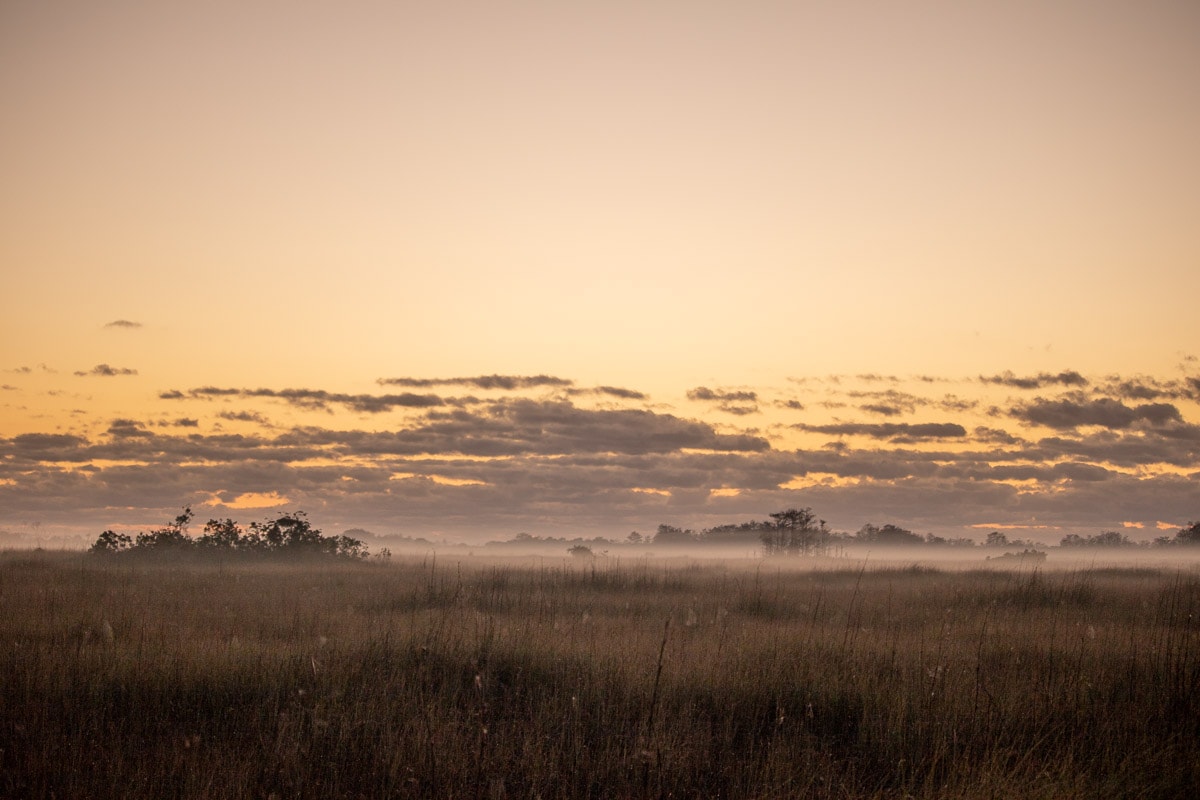
This blog post about driving through Everglades National Park on the Main Park Road contains affiliate links. You can read more about our Terms of Use / Disclosure here.
Contents
- Driving Through Everglades National Park
- Everglades Main Park Road FAQs
- Can You Drive Through Everglades National Park?
- Where Is the Entrance to the Everglades Main Park Road?
- How Much Is the Main Park Road Entrance Fee in Everglades National Park?
- How Much Time Do You Need to Drive the Everglades Main Park Road?
- Are There Gas Stations in Everglades National Park?
- Can You Buy Food in Everglades National Park?
- What Should You Bring on a Visit to Everglades National Park?
- More About Everglades National Park
- 12 Top Attractions on the Everglades Main Park Road
- More About Florida’s National Parks
Driving Through Everglades National Park
The Main Park Road in Everglades National Park is 40 miles long. Along with a couple of arrow-straight sections, it meanders its way in long curves through the park’s diverse ecosystems, from its wetland interior to the shallow shores of Florida Bay.
When driving from the Ernest F. Coe Visitor Center, which is near Florida City and Homestead, to the Flamingo area, you’ll pass pineland, cypress forest, hardwood hammock, sawgrass marsh, and coastal prairie landscapes, all of which contribute to the exceptional diversity of life—both fauna and flora—in Everglades National Park.
Although many visitors spend only a few hours in Everglades National Park, usually in either Shark Valley or Royal Palm (which is where the famous Anhinga Trail is located), there is enough to see and do in the park to keep you busy for a week or more.
This is, after all, the third largest national park in the contiguous United States—only Death Valley and Yellowstone are bigger. Distances between the main areas in the park are quite large, requiring some additional planning to see it all.
Therefore, if your time is limited, driving the Main Park Road in Everglades National Park is the best thing you can do to truly experience and immerse yourself in the park.
The Main Park Road is by far the largest accessible area in Everglades National Park. It offers the widest range of different Everglades experiences, from kayaking and boat tours to hiking, cycling, and, of course, wildlife viewing.
While you can drive the 40-mile Everglades Main Park Road in just an afternoon, I highly recommend dedicating at least two full days to this part of the park. Accommodation and campsites are conveniently available at Flamingo.
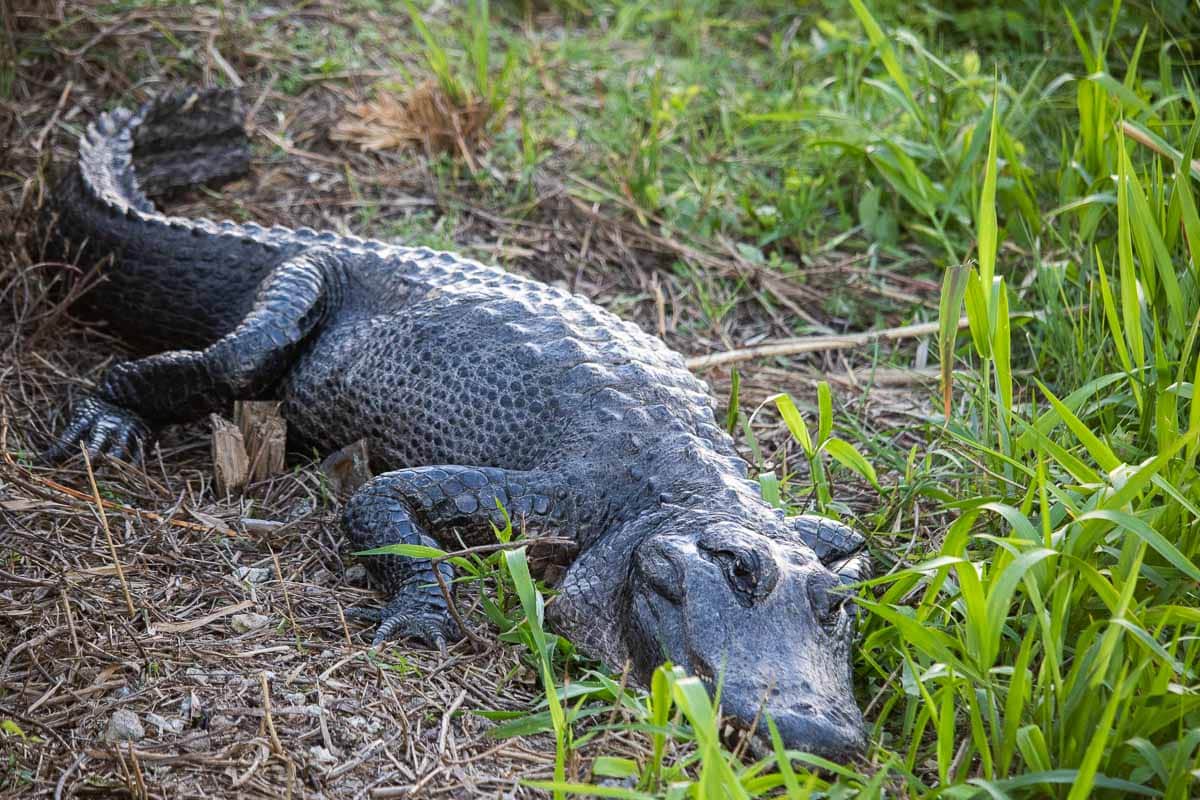
Everglades Main Park Road FAQs
Before we talk about the top attractions on the Main Park Road in the Everglades, let’s first answer some common questions.
Can You Drive Through Everglades National Park?
This question might be redundant, but let’s get it out of the way anyway. As this post obviously indicates, yes, you can absolutely drive through Everglades National Park.
The only way through the park is the Main Park Road, the very topic of this post, which runs between the Ernest F. Coe Visitor Center near Homestead and Flamingo.
Where Is the Entrance to the Everglades Main Park Road?
The entrance station to the Main Park Road is just past the Ernest F. Coe Visitor Center.
It is 11 miles southwest of downtown Homestead and 9.5 miles southwest of downtown Florida City. Depending on traffic conditions, it’s about an hour from Miami.
How Much Is the Main Park Road Entrance Fee in Everglades National Park?
All people who visit Everglades National Park must pay the park entrance fee. This includes visitors who’d like to drive the Main Park Road.
Park passes are valid for 7 consecutive days. Current Everglades National Park pass prices are as follows:
- Private vehicle: $30
- Motorcycle: $25
- Bicycle: $15
I’d also like to remind you—and recommend to you—that getting an America the Beautiful Pass is a fantastic deal. For $80, you get year-long access to all U.S. national parks, as well as all national forests, BLM lands, national wildlife refuges, and more.
You can check the Everglades National Park website for up-to-date entrance fees here.
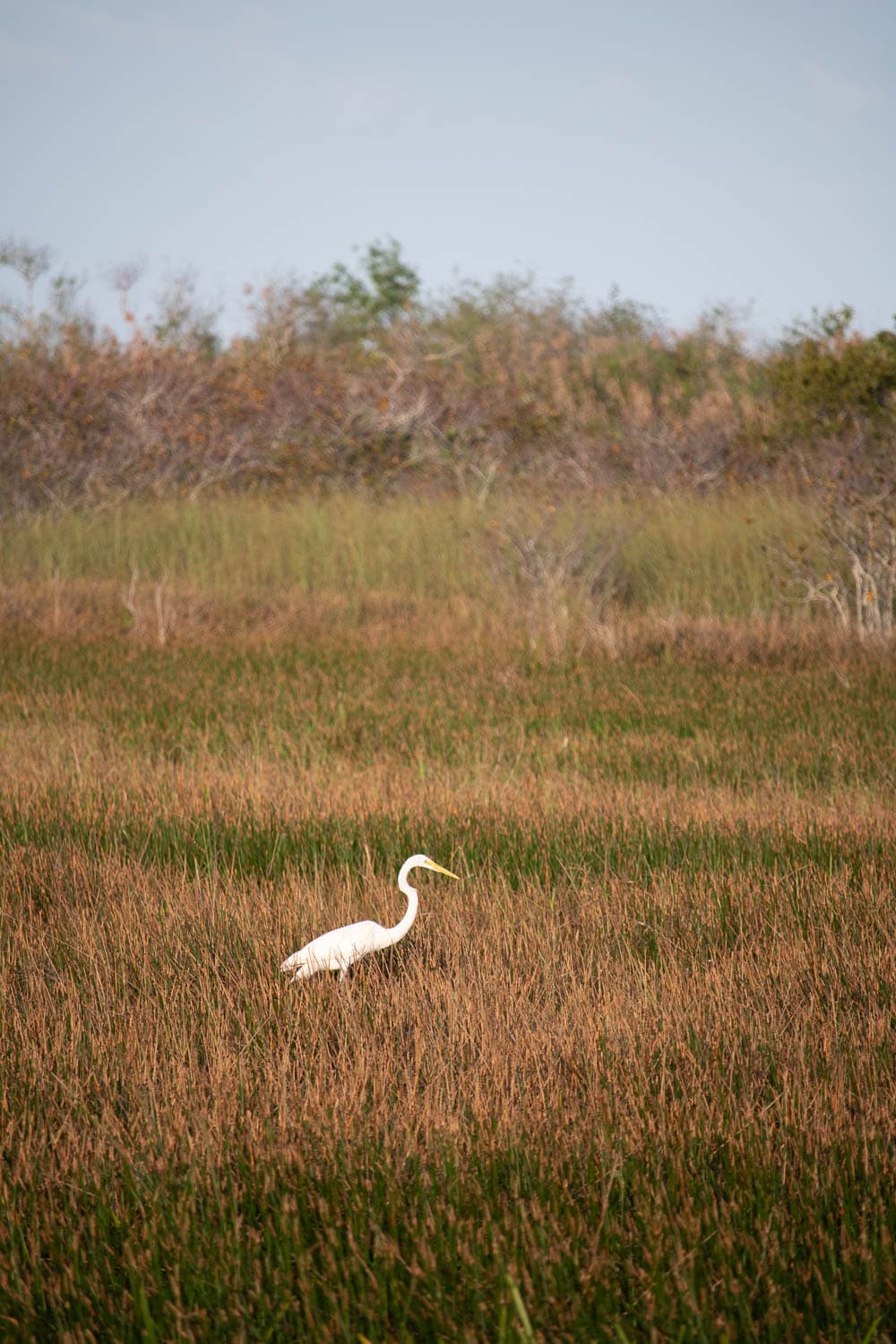
How Much Time Do You Need to Drive the Everglades Main Park Road?
Considering that the speed limit on the Main Park Road in Everglades National Park is 45 to 55 mph in most areas, you could technically drive the road in less than an hour.
However, because there’s so much to see and do, you’d need at least a full day to truly explore the Everglades Park Road. And by “full day,” I mean sunrise to sunset, both of which are amazing in the park.
Ideally, you’d spend two days and one night in the area. In two days, you can see essentially all the Everglades Main Park Road highlights below.
Are There Gas Stations in Everglades National Park?
There is a fuel station at the Flamingo Marina, but it’s meant mainly for boats. Although they do seem to sell fuel for vehicles, I’d strongly recommend filling up your tank in Homestead or Florida City before heading into the park.
It’s also worth noting that, if available in the first place, gas within the national park is quite expensive.
Can You Buy Food in Everglades National Park?
The short answer to this question is yes, you can buy food in Everglades National Park. The longer answer, however, is a bit more nuanced.
While food is available on the Main Park Road, it’s by no means high-end cuisine. You can, for example, buy a limited variety of snacks and drinks at the Ernest F. Coe Visitor Center. Those aren’t complete meals, though.
The place with the most options and variety is the Flamingo Marina store. It sells things like snacks, coffee, water, and camp cooking supplies.
It also has fridges with cold drinks, premade sandwiches, and yogurt parfaits, among other things (certain items can be sold at any time, though).
The best and only place to grab breakfast, lunch, or an early dinner on the Main Park Road is the food truck at the Flamingo Marina. Its menu features food like hot dogs, (veggie) burgers, breakfast burritos, and fish tacos.
See opening times for the Flamingo Marina store and food truck here.
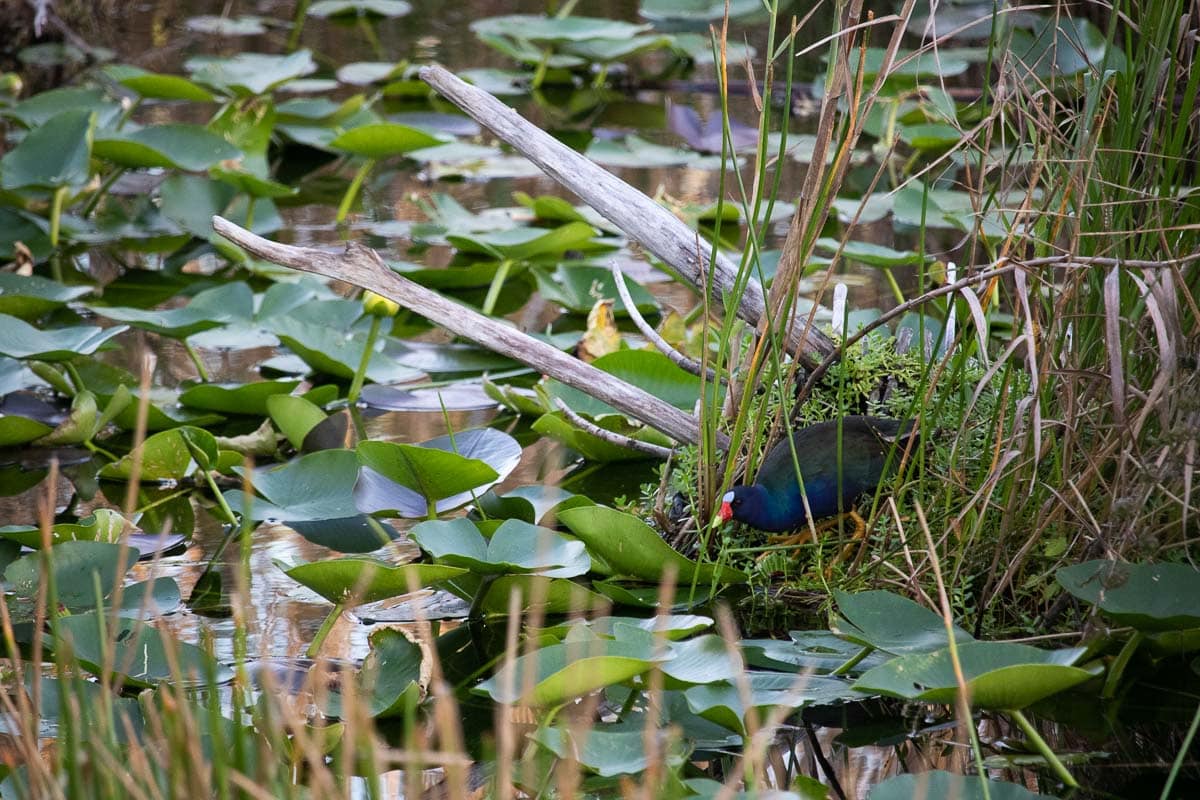
What Should You Bring on a Visit to Everglades National Park?
Everglades National Park encompasses the largest subtropical wilderness in the United States. As such, you should expect warm and humid weather, even in the dry winter season.
Essential things to bring with you when driving the Main Park Road and doing some activities along the way are the following:
- Sunglasses
- Sunscreen
- Hat
- Binoculars
- Camera
- Walking shoes
- Insect repellent
- A cooler with food, snacks, and plenty of water
- Change of clothes (you might get a bit wet if you go kayaking or canoeing)
- National Park Pass, if you have one (you can buy America the Beautiful Passes here)
More About Everglades National Park
- Park Website
- Travel Guide
- Topographic Map
- Where to See Wildlife in Everglades National Park
- Where to See Alligators and Crocodiles in the Everglades
- Famous Birds of the Everglades
- Best Everglades Bike Trails
- Accommodation
12 Top Attractions on the Everglades Main Park Road
A plethora of attractions and points of interest line the Everglades Main Park Road. Driving this road is an absolute “must” if you’d like to get a complete understanding of the sheer diversity of the Everglades.
The Main Park Road provides a complete insight into what the Everglades is all about. You simply cannot find this kind of variety anywhere else in the park.
From information-packed visitor centers to popular hiking trails and scenic overlooks, from guided boat excursions to wildlife watching, from unique pine rocklands to mangrove-lined coastlines, the Main Park Road in the Everglades has it all, and much more.
So, let’s take a closer look at the many highlights of the Main Park Road through the Everglades.
The following places to visit on the Main Park Road in Everglades National Park are listed from the northeast to the southwest. They’re in the exact order as you would pass them when driving from Homestead to Flamingo.
Ernest F. Coe Visitor Center
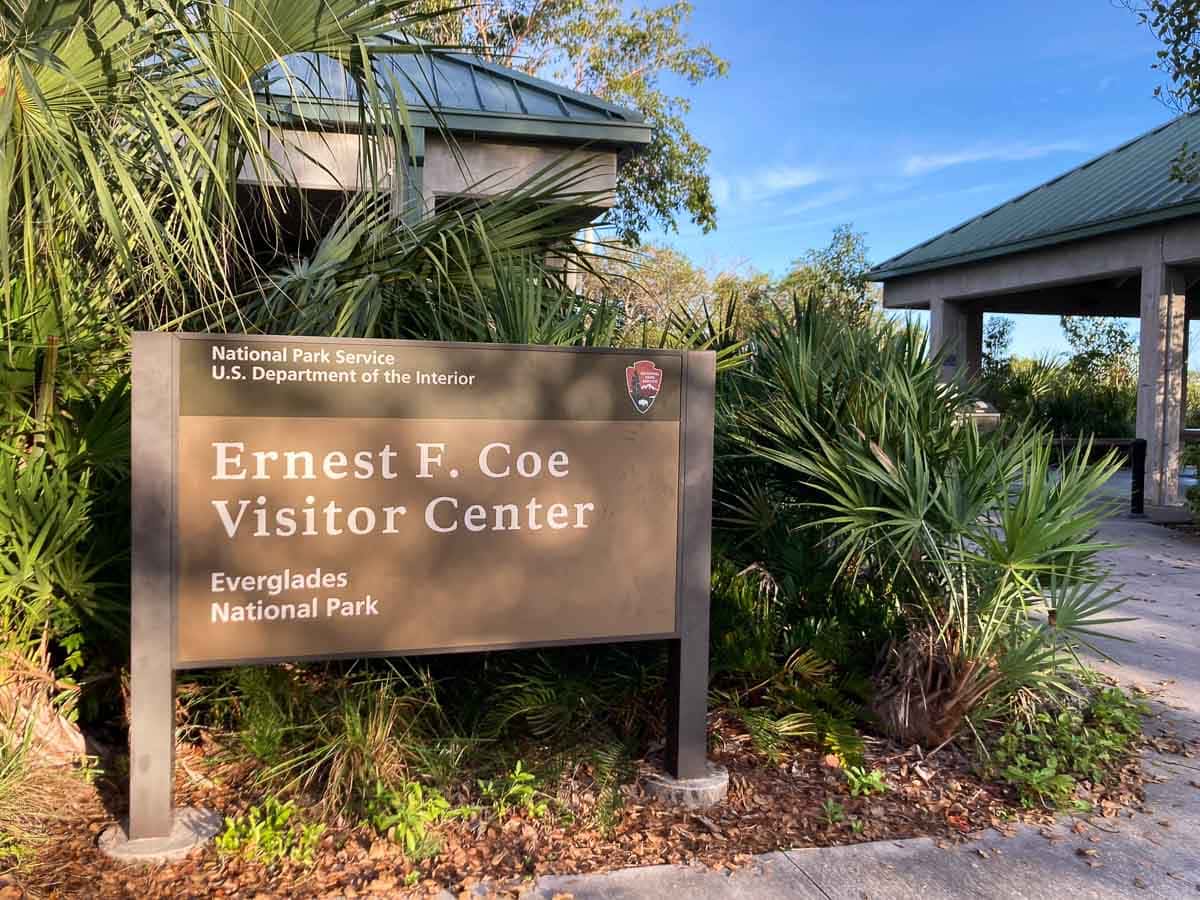
One of the main visitor centers in Everglades National Park, the Ernest F. Coe Visitor Center is the perfect place to begin your scenic drive on the Main Park Road.
It is located just within the park’s eastern boundary, a 15-to-20-minute drive from Homestead or Florida City.
The visitor center has a number of amenities and visitor services. You can watch orientation films, talk to a park ranger, and grab all kinds of brochures, maps, and pamphlets.
Additionally, the small store sells everything from postcards and books to insect repellent and drinks.
Anhinga Trail
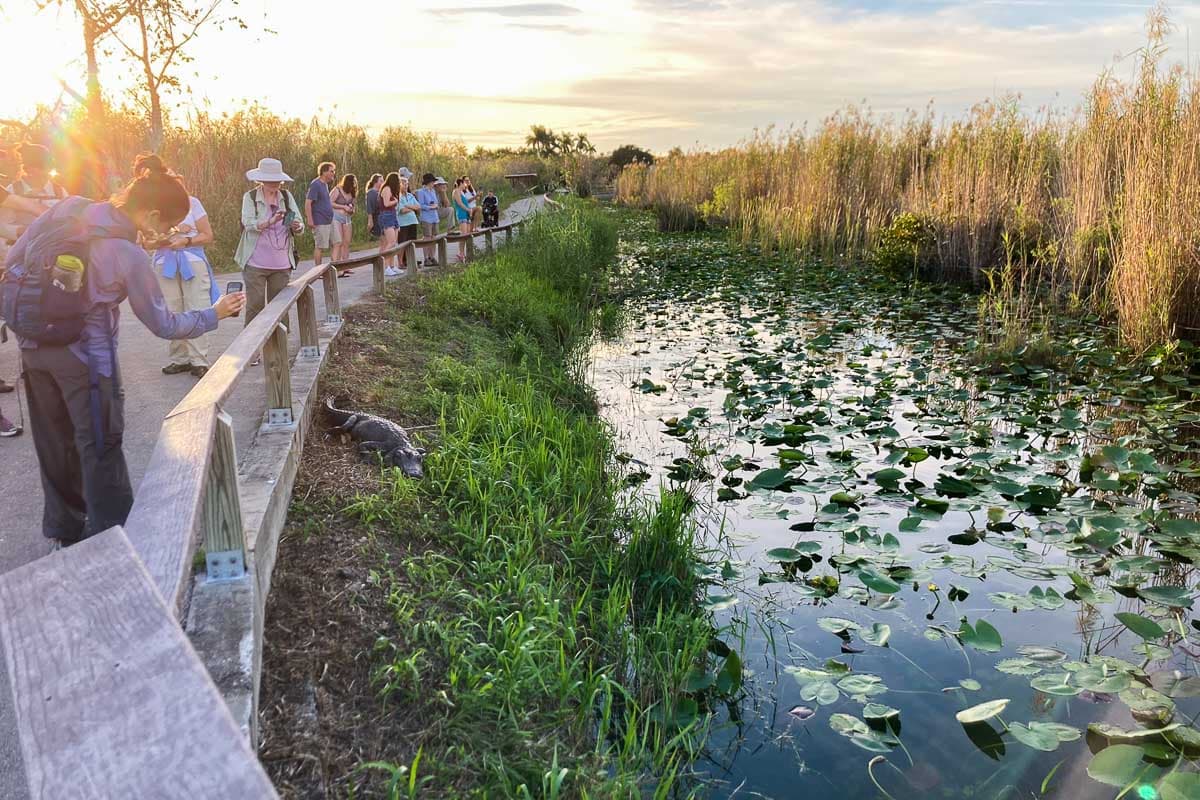
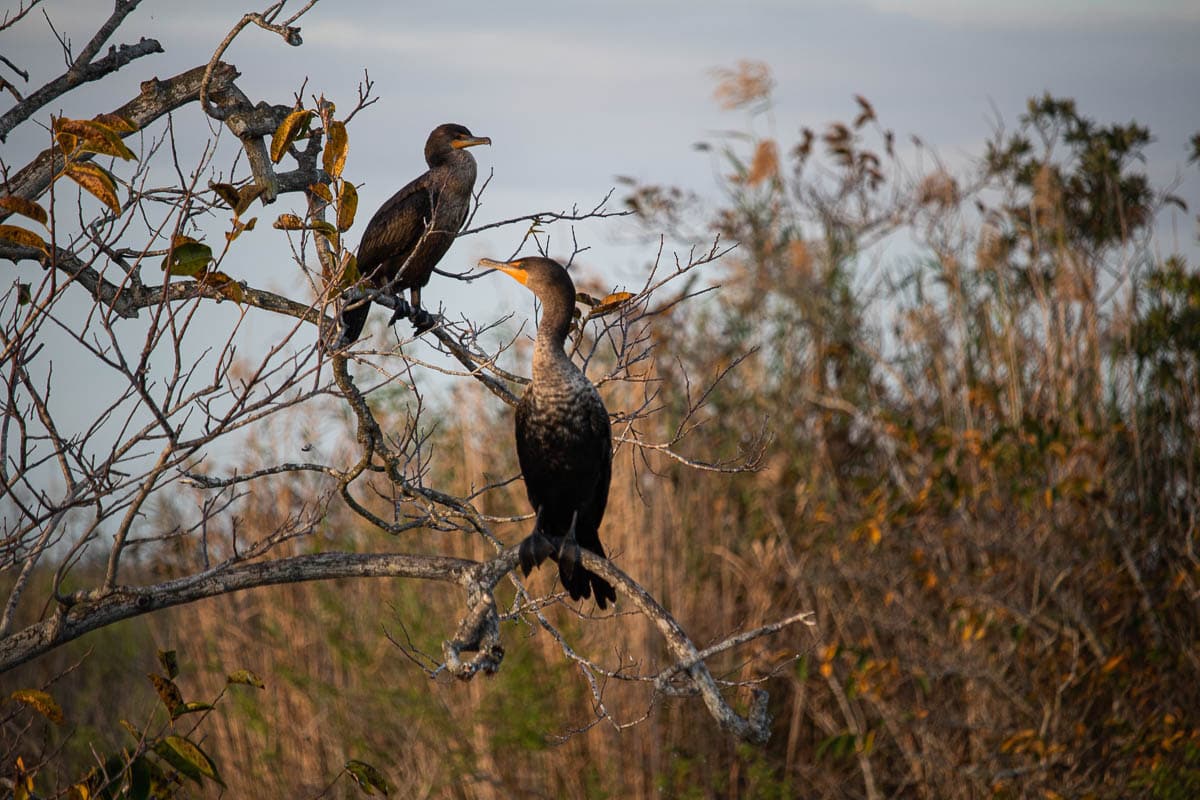
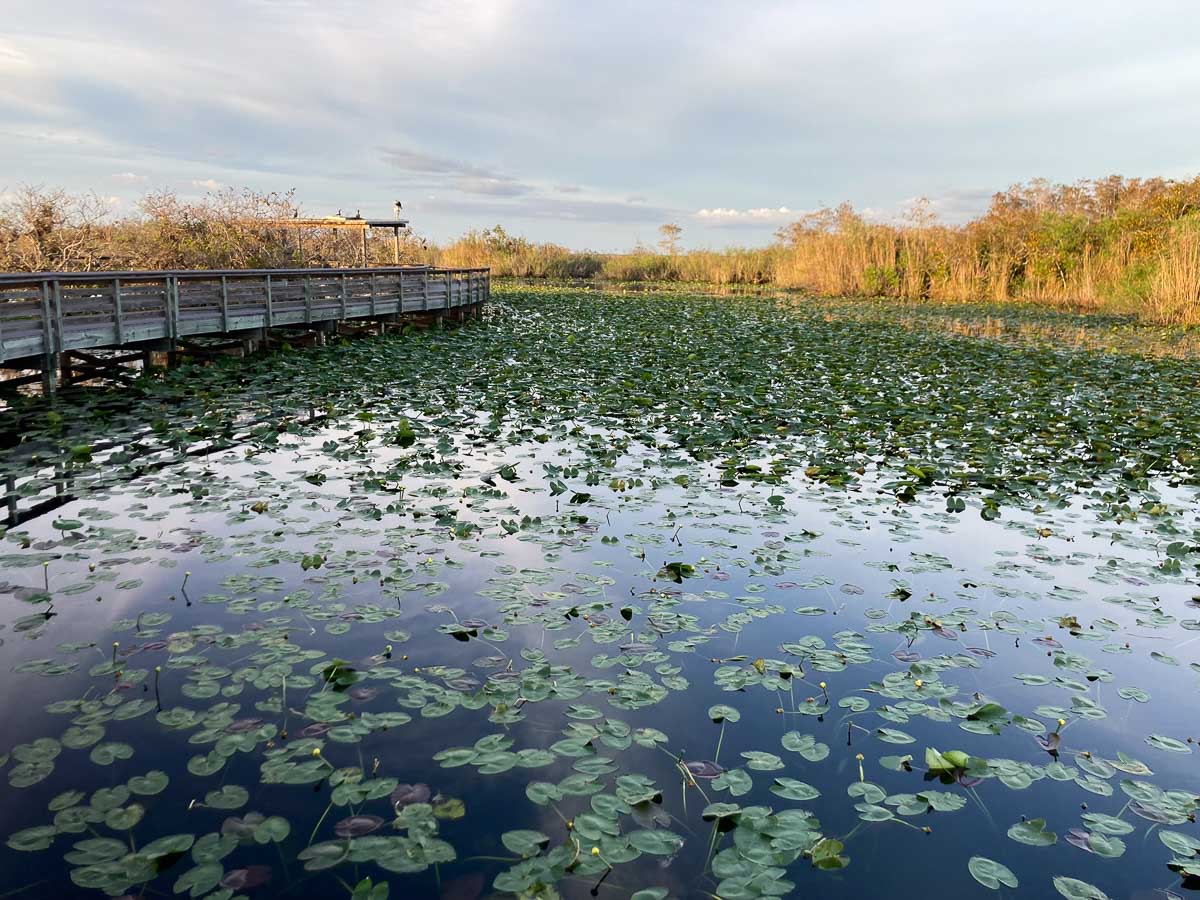
The famous Anhinga Trail is one of two trails at Royal Palm, a short drive from the Ernest F. Coe Visitor Center.
Arguably the easiest place to see wildlife in Everglades National Park, the popular Anhinga Trail is famous for its abundant and diverse fauna.
For many visitors to the Everglades National Park, this is the place they’ll see their first alligators. In fact, you’re pretty much guaranteed to see several ‘gators on the Anhinga Trail.
This 0.8-mile trail, which starts at the Royal Palm Visitor Center and features a boardwalk over sawgrass marshes, is one of the most popular trails in Everglades National Park because of its plethora of wildlife.
Besides alligators, you can also see river otters and turtles here, along with famous Everglades birds like herons, egrets, cormorants, purple gallinules, and the trail’s namesake anhingas.
Don’t skip this! The Anhinga Trail is without question one of the absolute top attractions on the Everglades Main Park Road.
Gumbo Limbo Trail
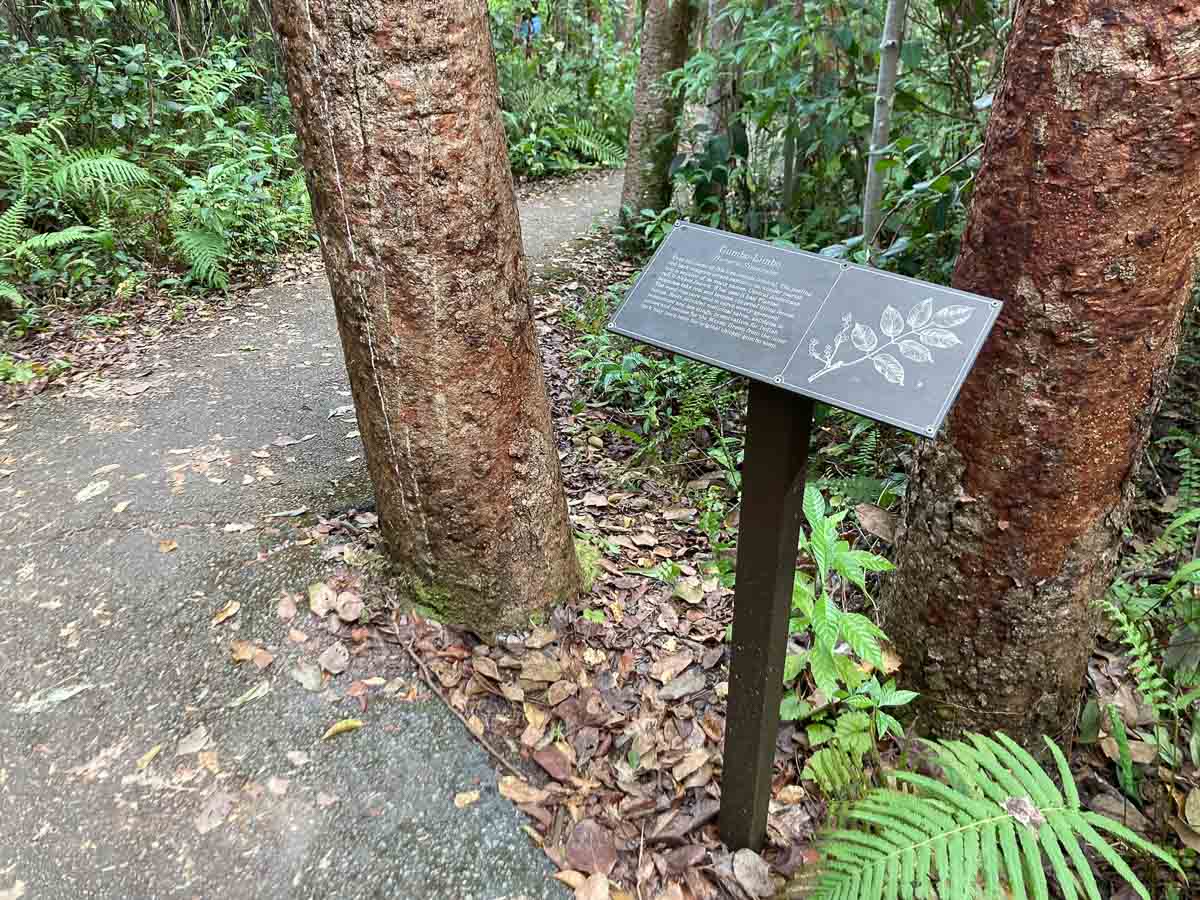
The second trail at Royal Palm, the Gumbo Limbo Trail is a 0.4-mile self-guided loop through a wonderful hammock of gumbo limbo trees, royal palms, and ferns.
Combined with the adjacent Anhinga Trial, it offers a nice insight into the amazing diversity of the Everglades.
Look up into the trees to see air plants, tree snails, and a variety of birds. Alligators are occasionally seen in the couple of ponds along the trail, too.
Pinelands
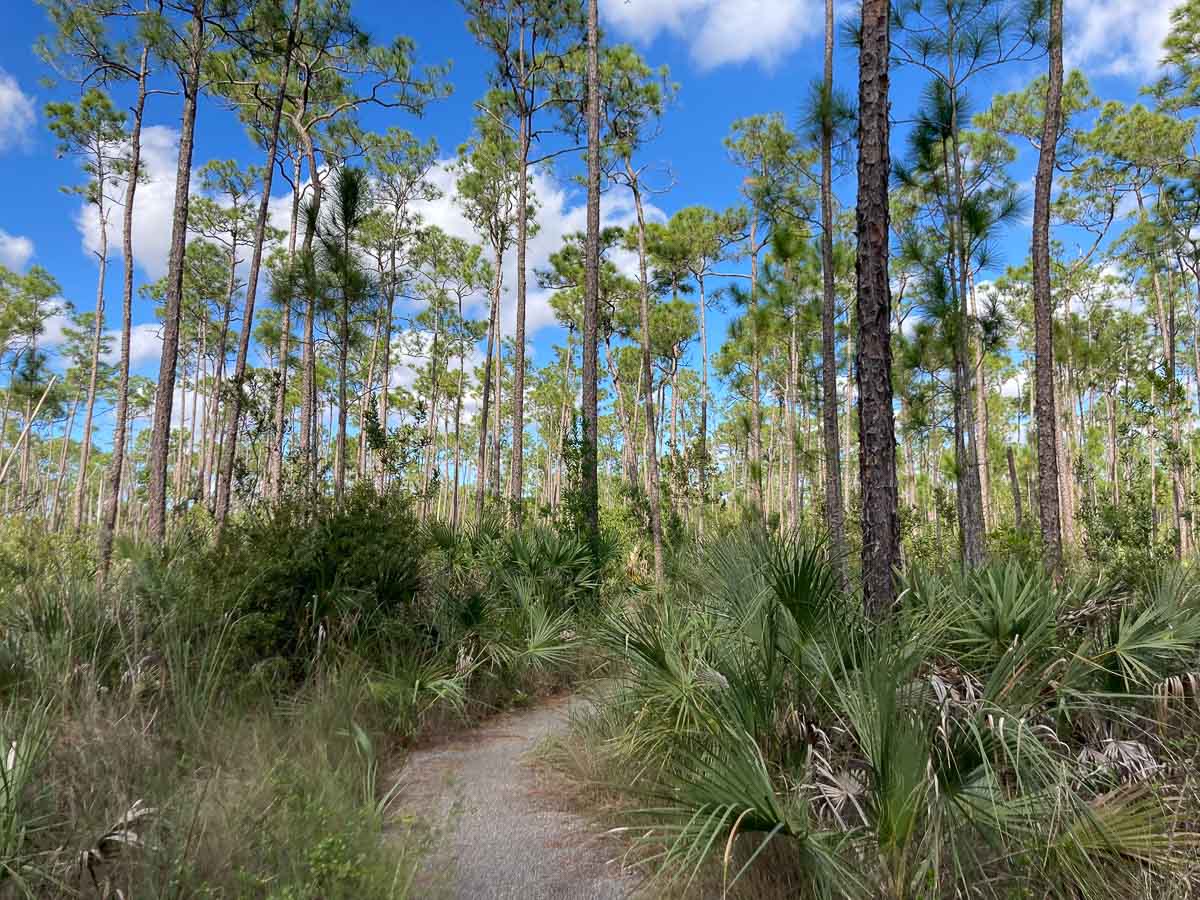
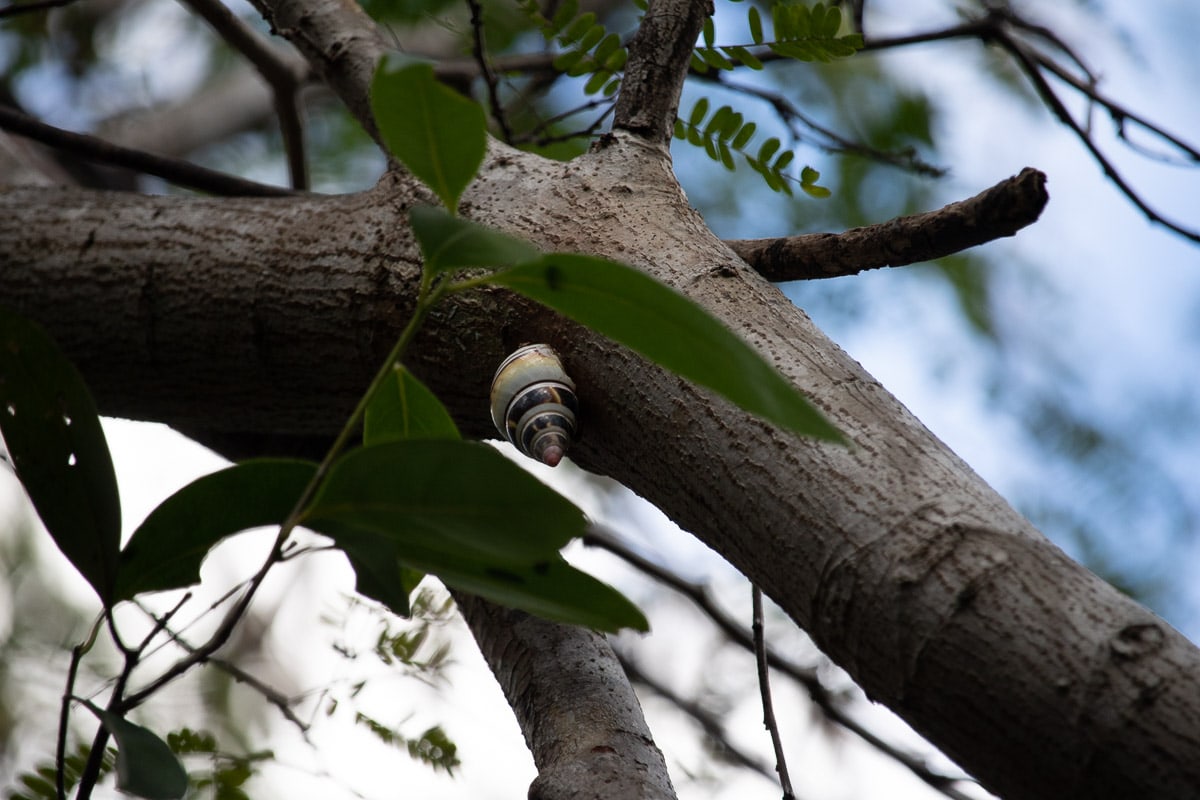
Also known as pine rocklands, pinelands are “the rarest and most diverse habitat” in Everglades National Park, the National Park Service says.
The first section of the Main Park Road is the only area in the park where you can explore this extraordinary fire-dependent ecosystem of slash pine forests and dense undergrowth.
You can camp at the Long Pine Key Campground and walk or bike the excellent Long Pine Key Natural Trail.
The most convenient option, however, is hiking the short and paved Pinelands Trail. This 0.4-mile loop trail takes you through a beautiful forest of pines and palmettos. In addition to the unique scenery, you can also often see some of the Everglades’ remarkable tree snails here.
Pa-hay-okee Overlook
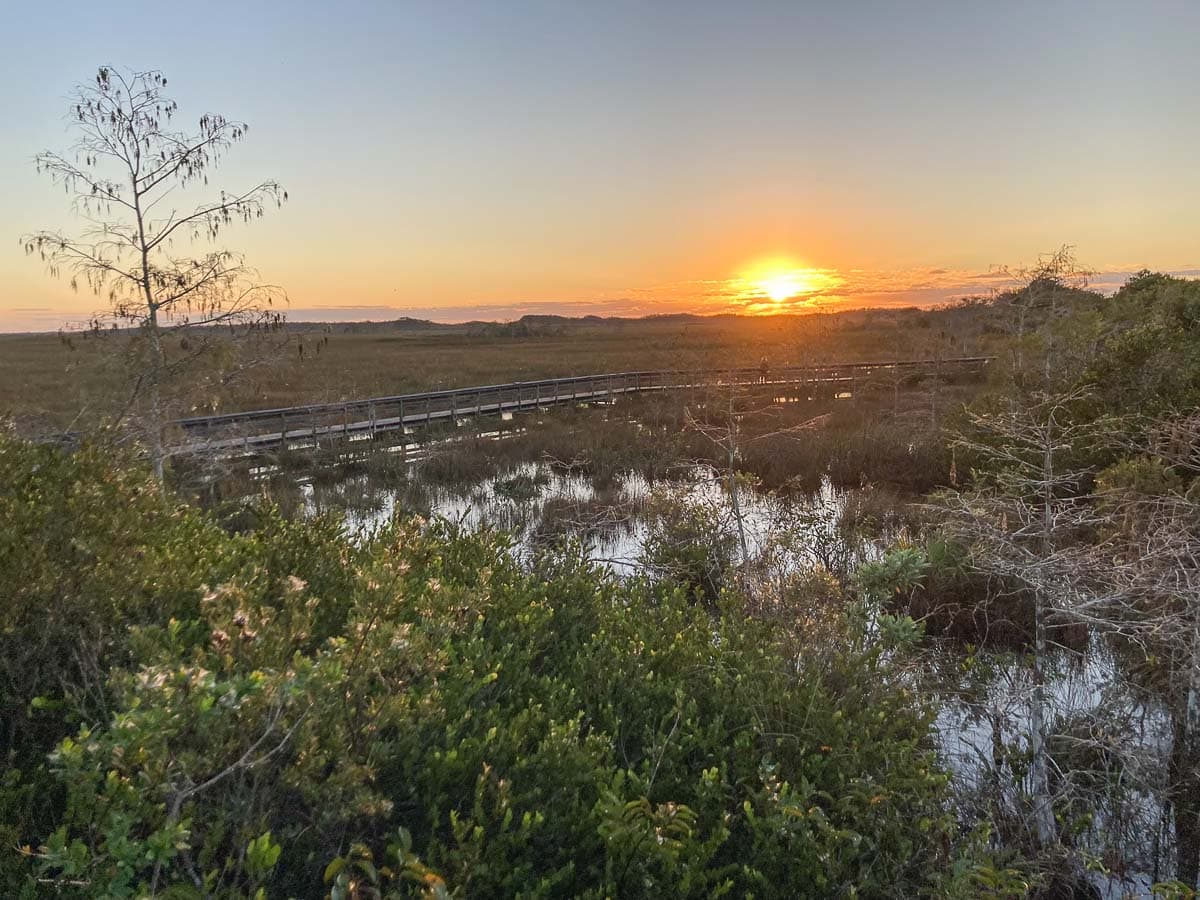
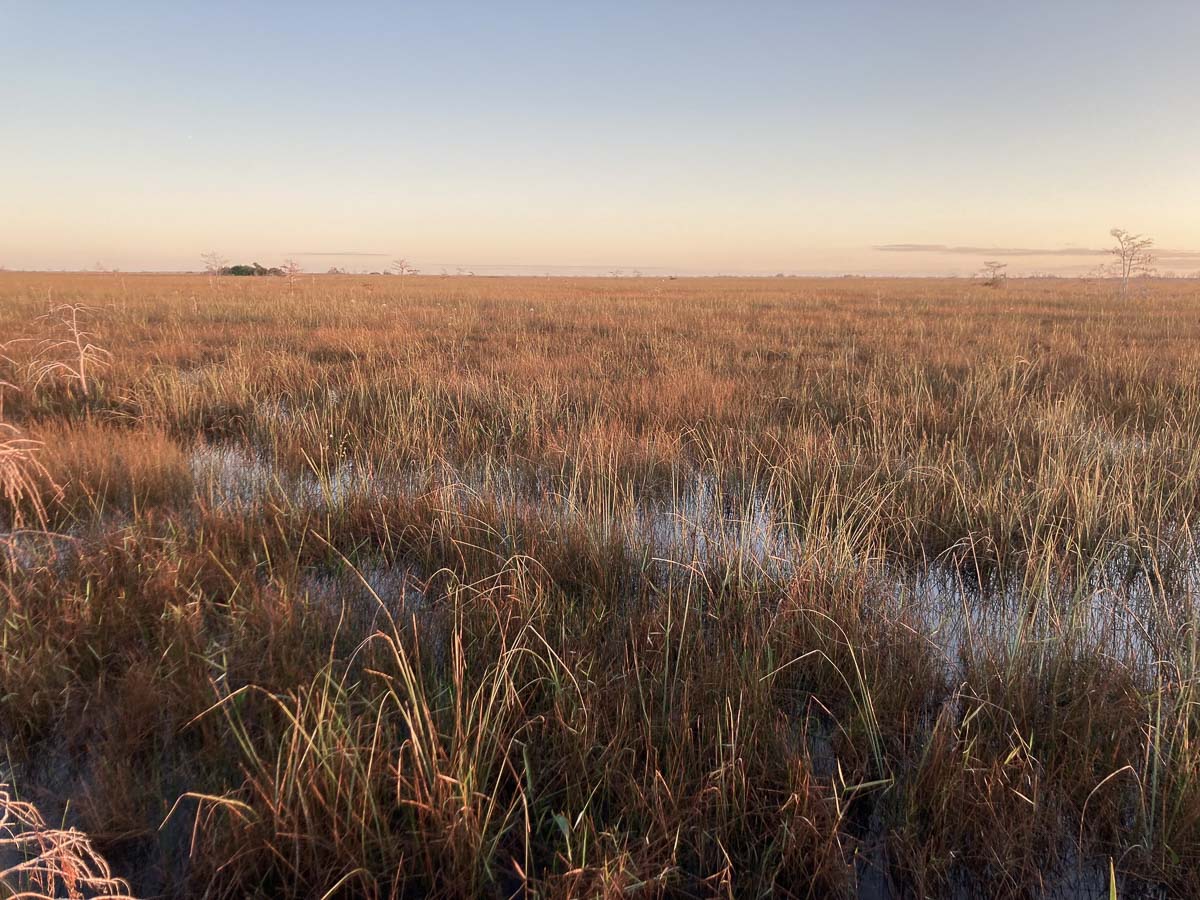
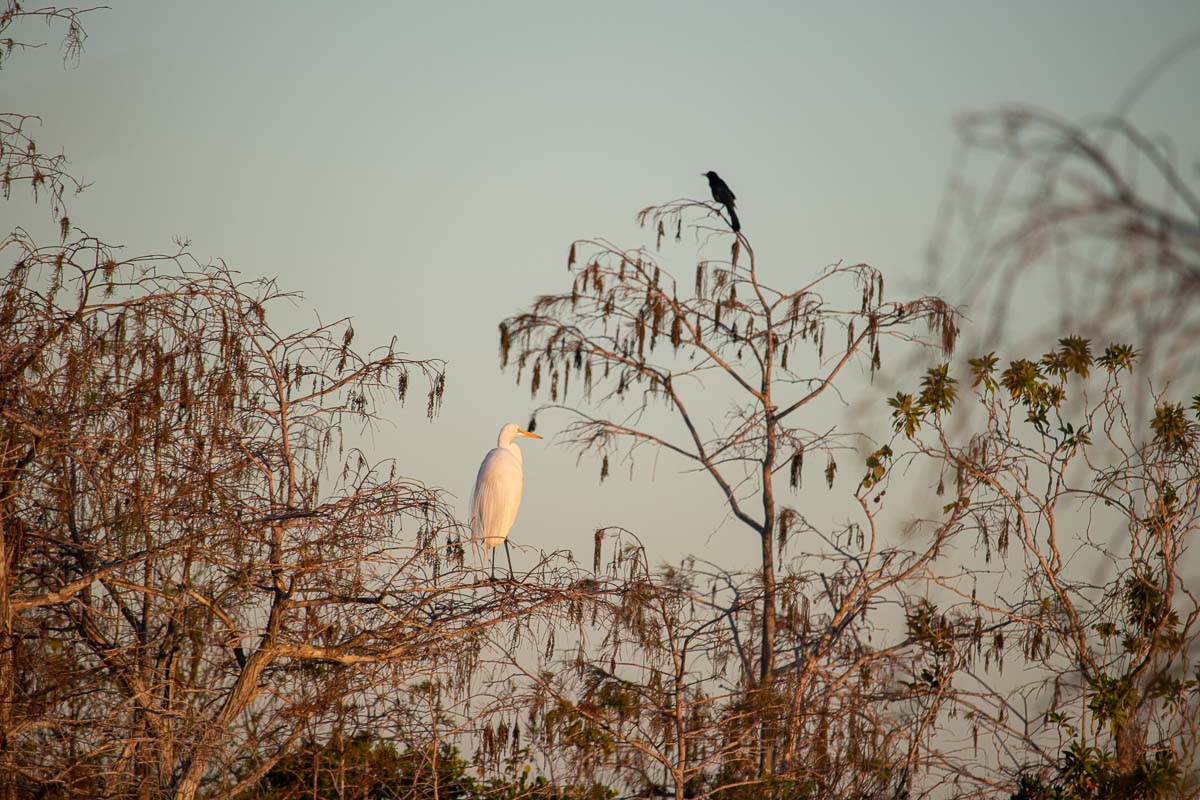
For a visual summary of the various ecosystems in the Everglades, the Pa-hay-okee Overlook is unparalleled.
Along this scenic boardwalk loop, you can see a few different Everglades habitats, including a cypress swamp and a small hardwood forest. The main highlight, however, is the sweeping view of the expansive Shark River Slough, the famous “River of Grass.”
The Pa-hay-okee Overlook is easily one of the top places to visit on the Everglades Main Park Road. It’s especially spectacular at sunrise and sunset. Watch for birds up in the cypress trees and down in the wetlands, You might see an owl, songbird, heron, and/or egret here.
Mahogany Hammock
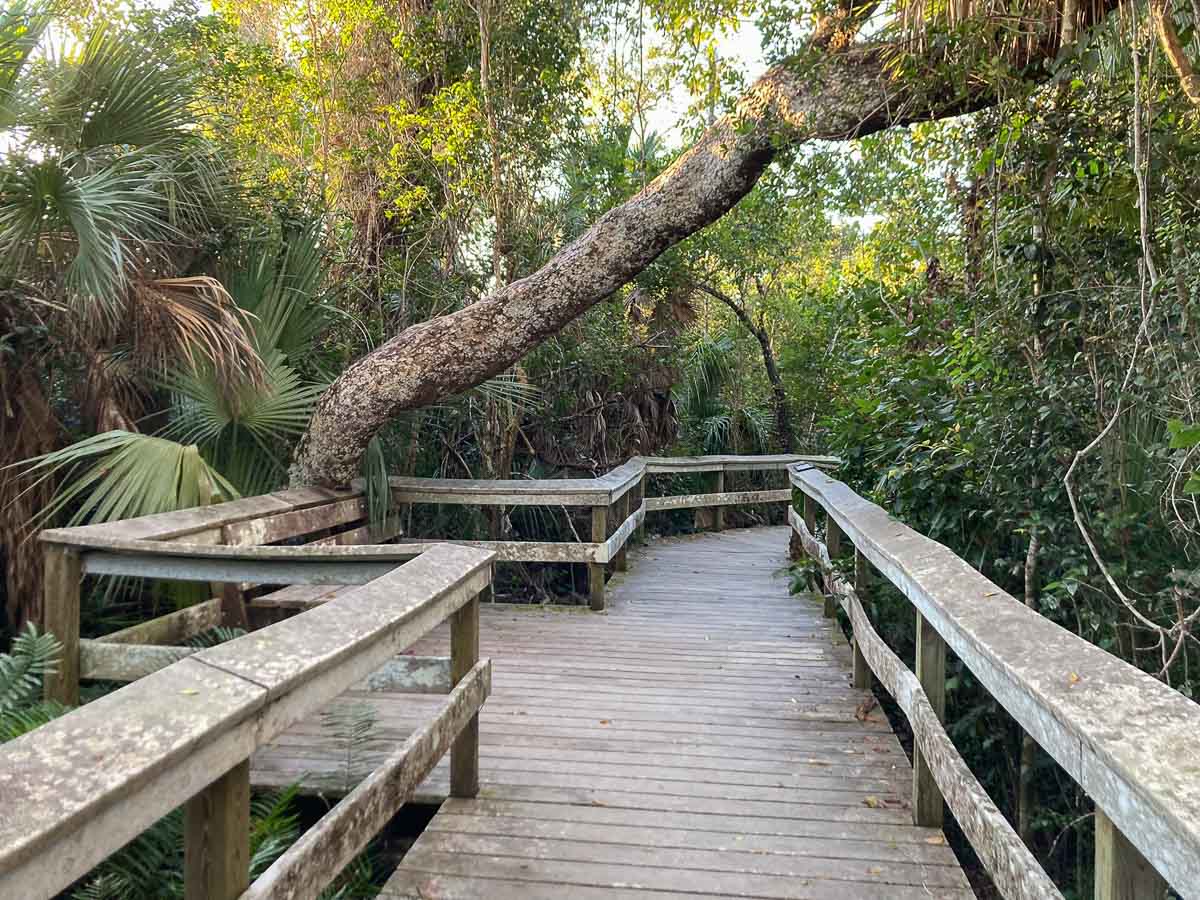
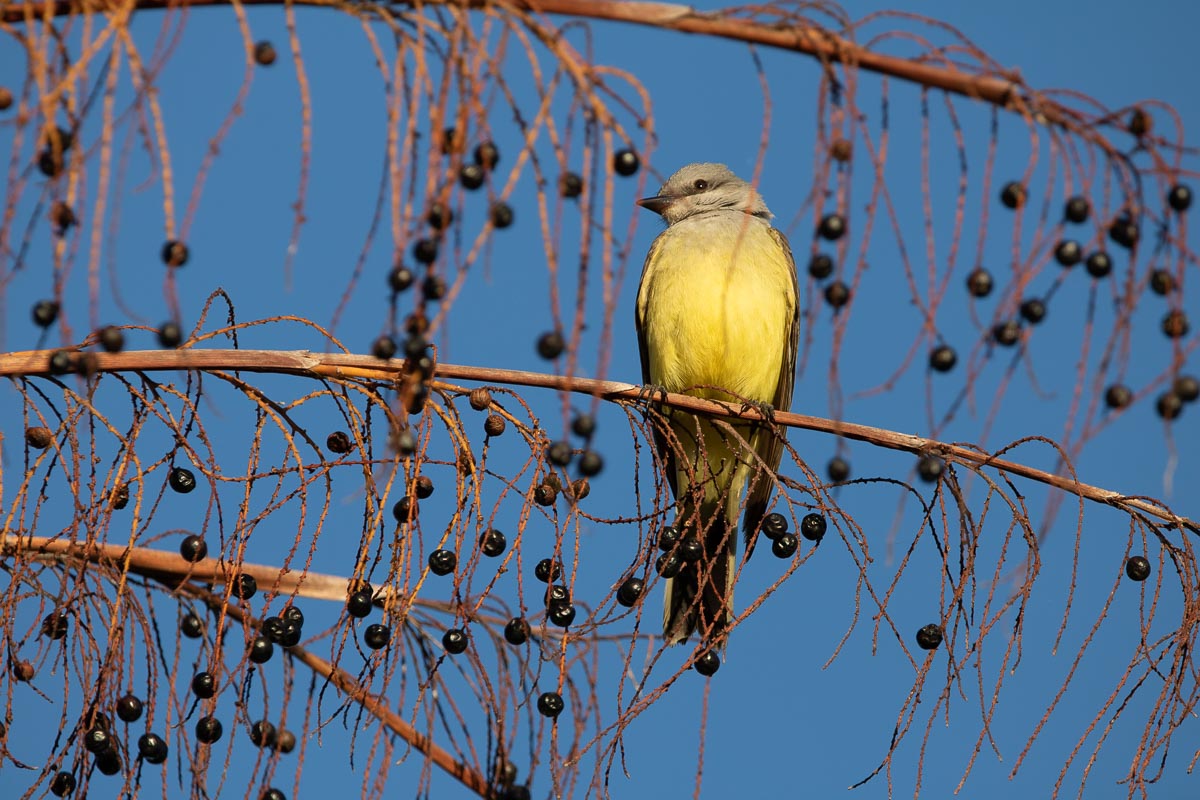
One of the greatest short hikes in Everglades National Park, and one of the top places to visit on the Main Park Road, the Mahogany Hammock Trail is a 0.5-mile boardwalk loop through a verdant hardwood hammock.
In this area of dense vegetation, which is almost jungle-like, you can see air plants, gumbo limbo trees, and America’s largest living mahogany tree.
You won’t find any aquatic animals here, though. Instead, this is a great place to look for birds that are harder to find in other areas in the park.
Spend some time at Mahogany Hammock and the surrounding area along the Main Park Road and watch for Cape Sable seaside sparrows, warblers, and bald eagles in the morning, and barred owls in the evening.
This is a great walk to immerse yourself in one of the distinct ecosystems of the Everglades—hardwood hammocks.
Paurotis Pond
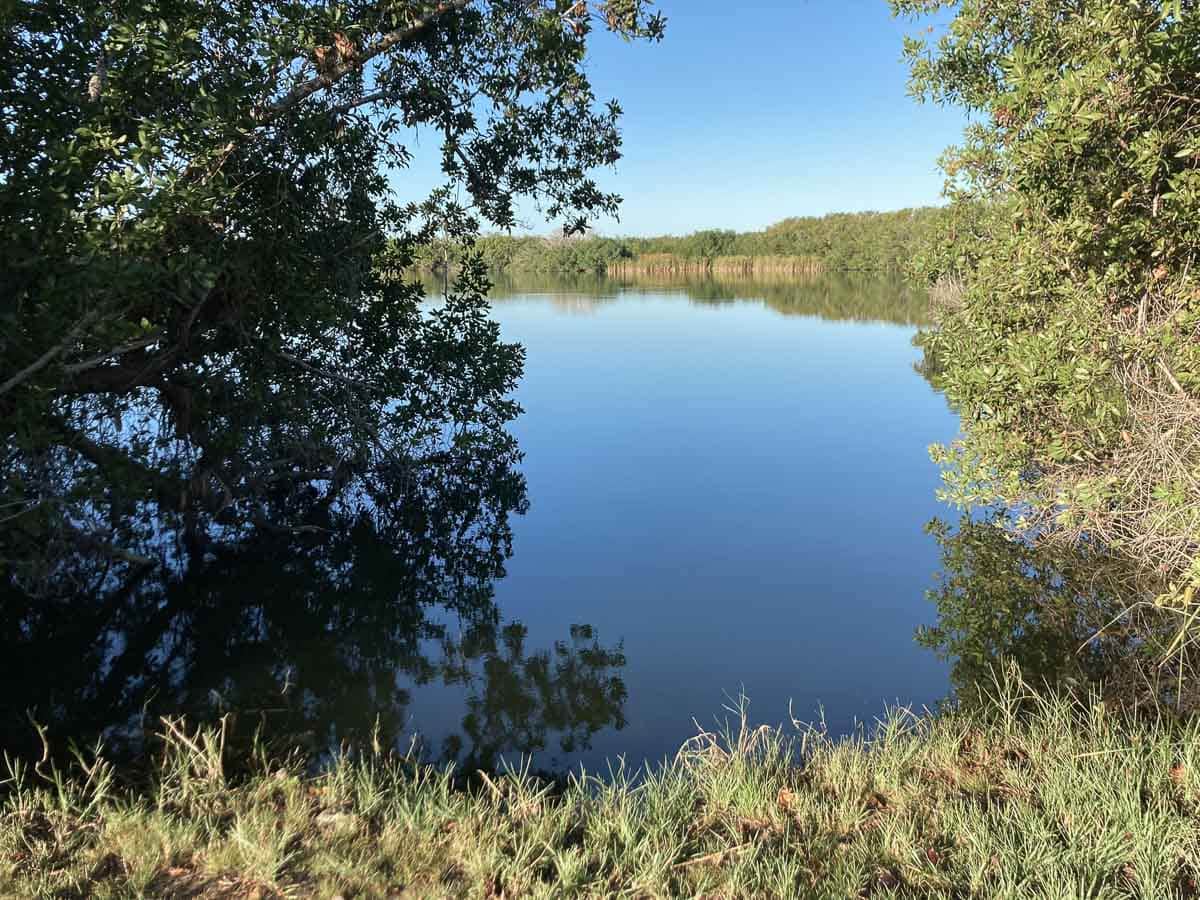
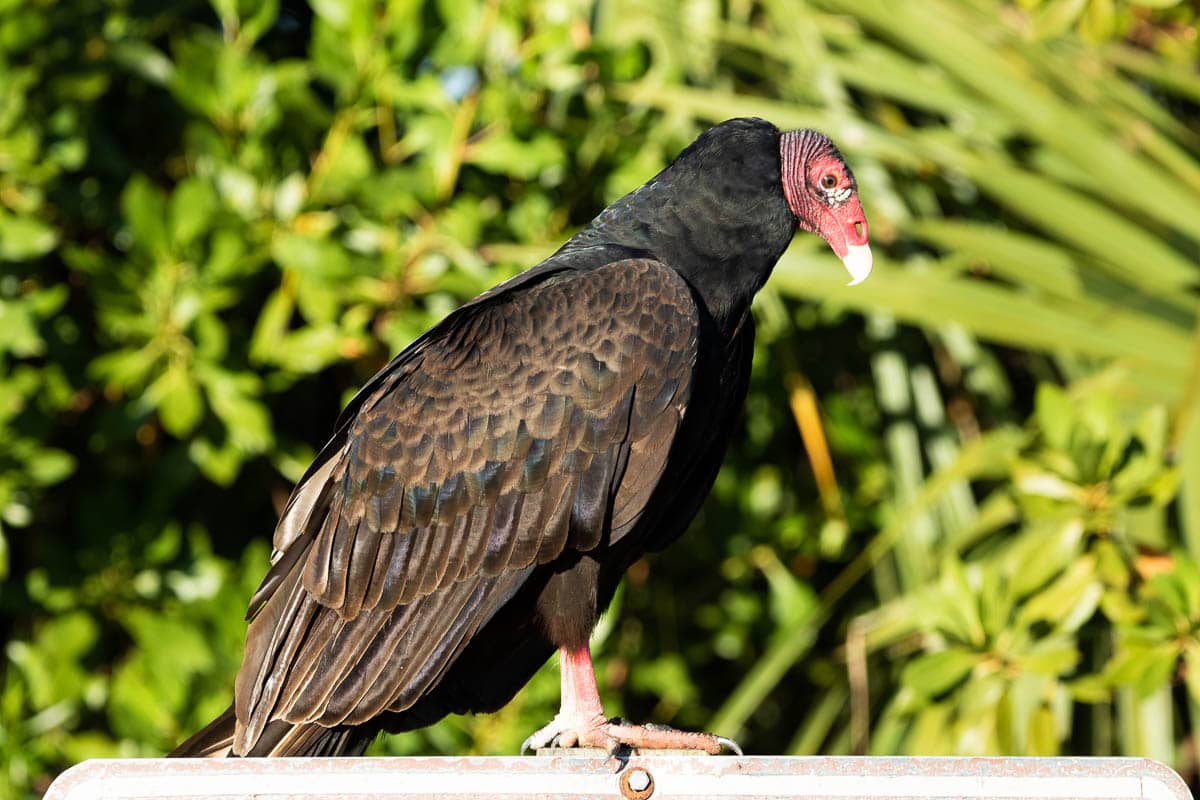
A small pond that’s popular among paddlers and fishermen, Paurotis Pond is also a seasonal birding hotspot.
While you can see some birds here year-round, such as vultures and water birds, it becomes a bird watcher’s heaven during the nesting season.
Paurotis Pond is a busy rookery for wading birds, including egrets, herons, ibises, roseate spoonbills, and wood storks. Numbers vary every year, but it’s not unusual to see hundreds, even thousands, of wading birds here during the spring nesting season.
Paurotis Pond is on the west side of the Main Park Road, between Mahogany Hammock and Nine Mile Pond. There’s a small parking lot and picnic benches.
Nine Mile Pond Canoe Trail
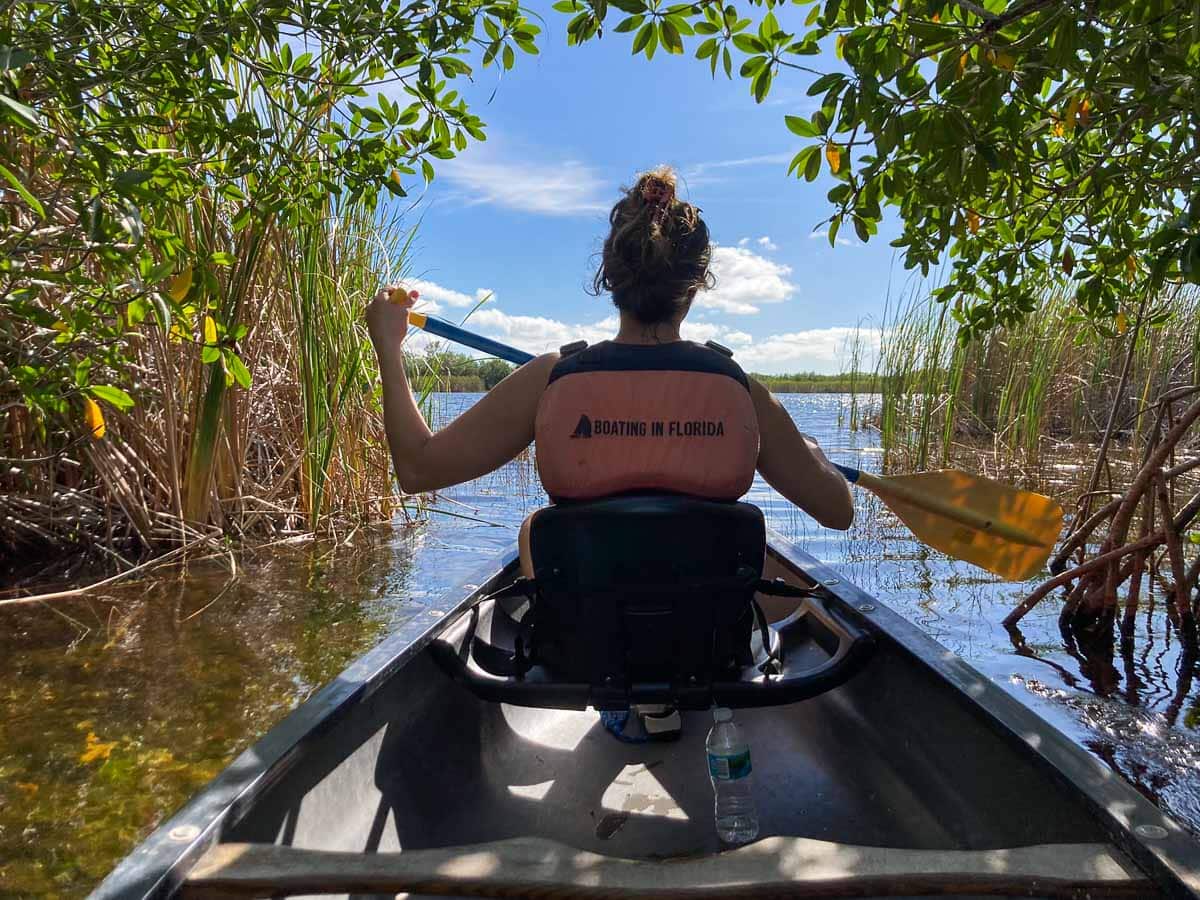
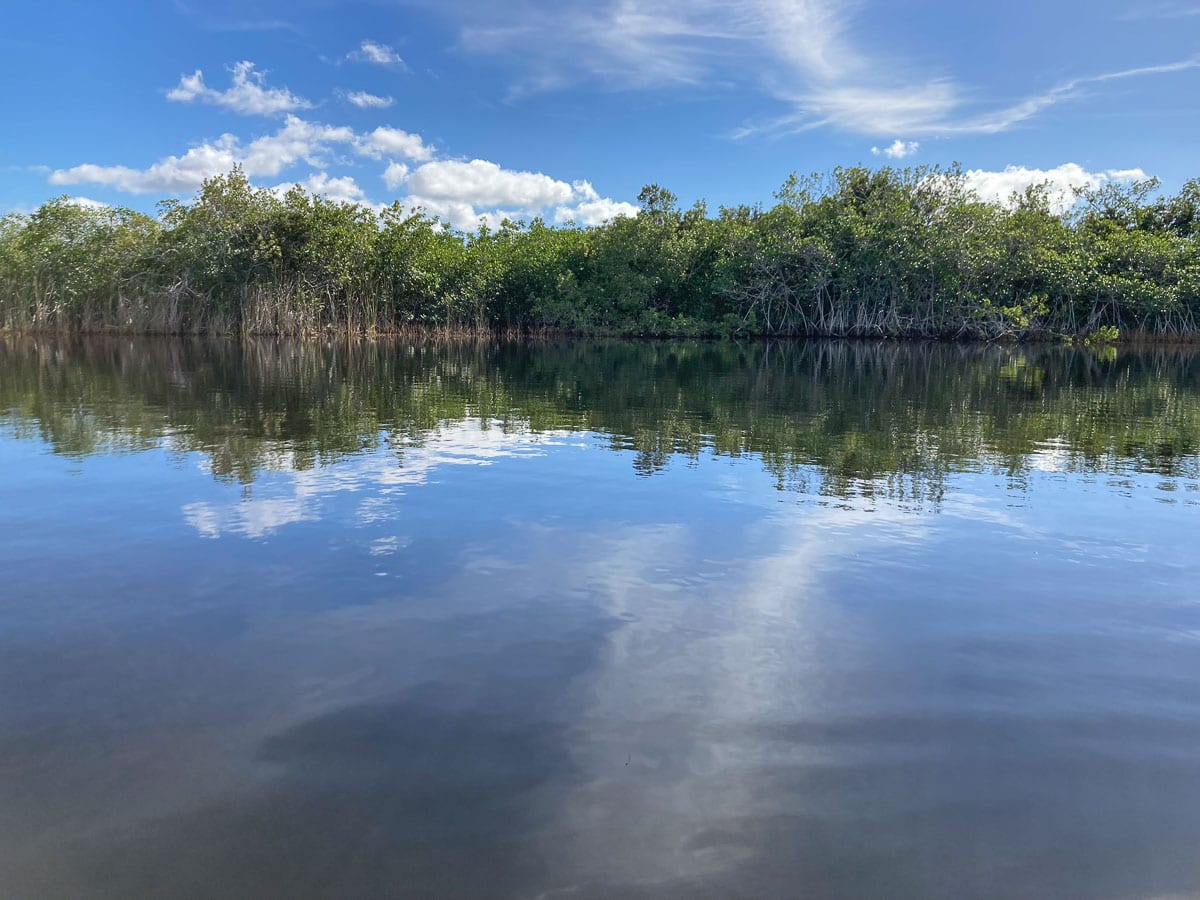
When it comes to seeing wildlife along the Main Park Road in Everglades National Park, Nine Mile Pond is a great place to go.
The scenic 5-mile Nine Mile Pond Canoe Trail passes through small ponds, a shallow sawgrass marsh, and past scattered islands of mangroves. To explore this wonderful wetland area of quintessential Everglades scenery, you can rent canoes or kayaks at Flamingo.
Along the way, keep an eye out for both alligators and crocodiles, turtles, as well as the abundance of bird species that is so typical of the Everglades.
Look for wading birds like wood storks, roseate spoonbills, herons, limpkins, and egrets. Other birds you might see include snail kites and white-crowned pigeons.
If you’d like to stay firmly on land, there’s a picnic area on the shore of Nine Mile Pond that also offers excellent wildlife viewing.
West Lake Boardwalk
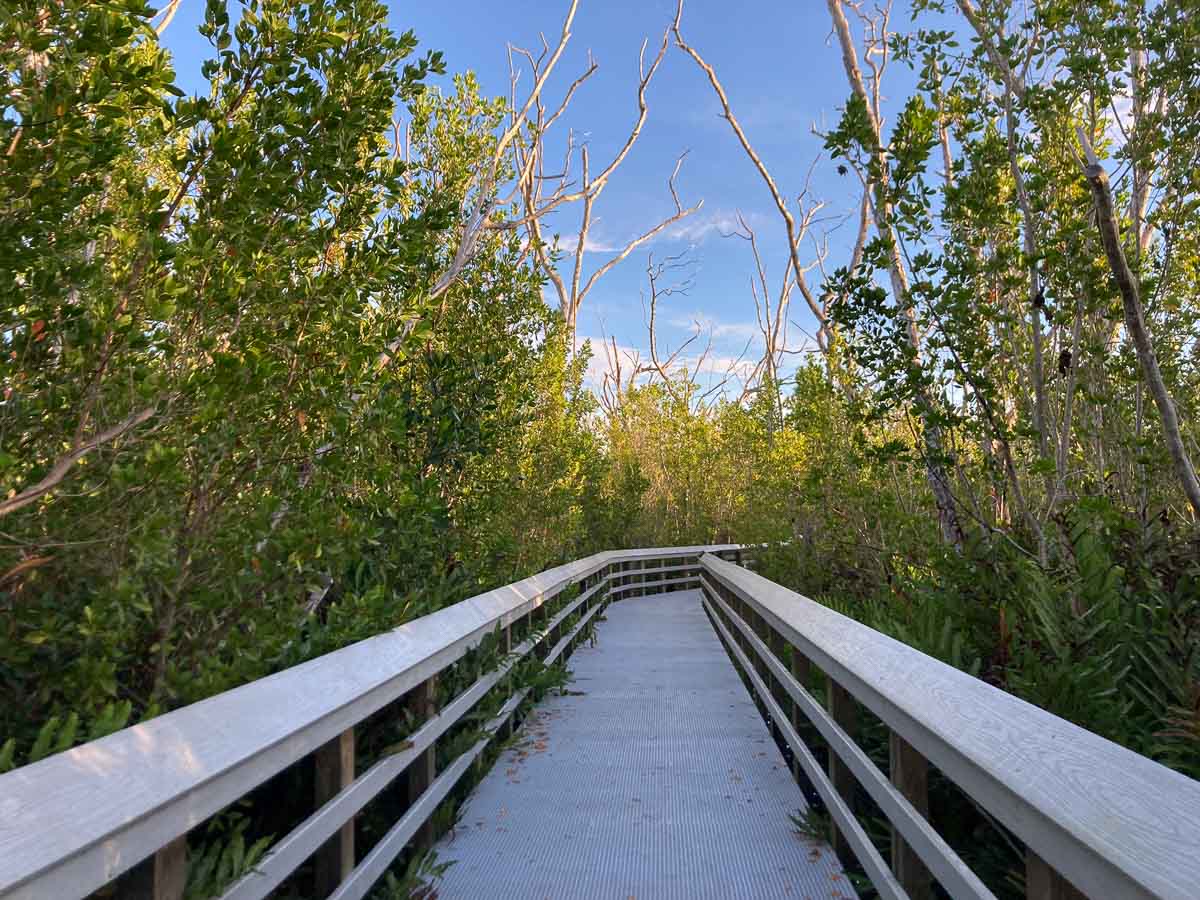
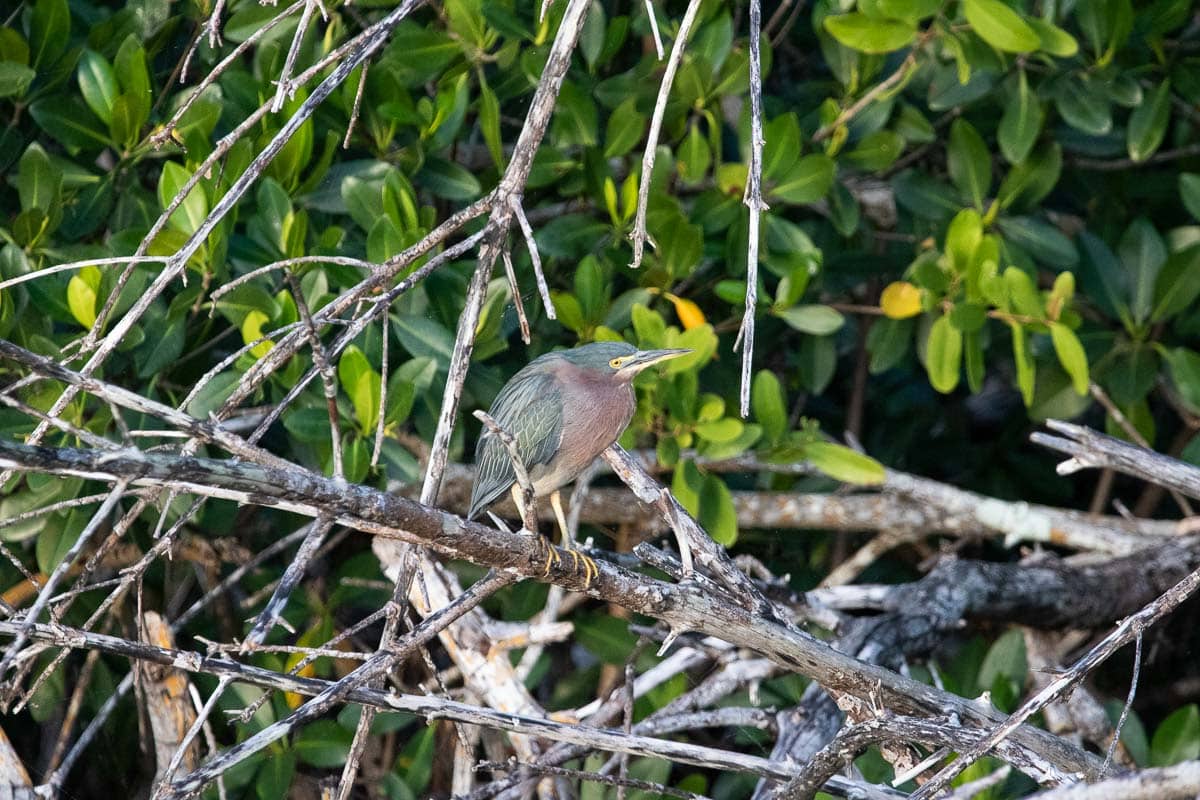
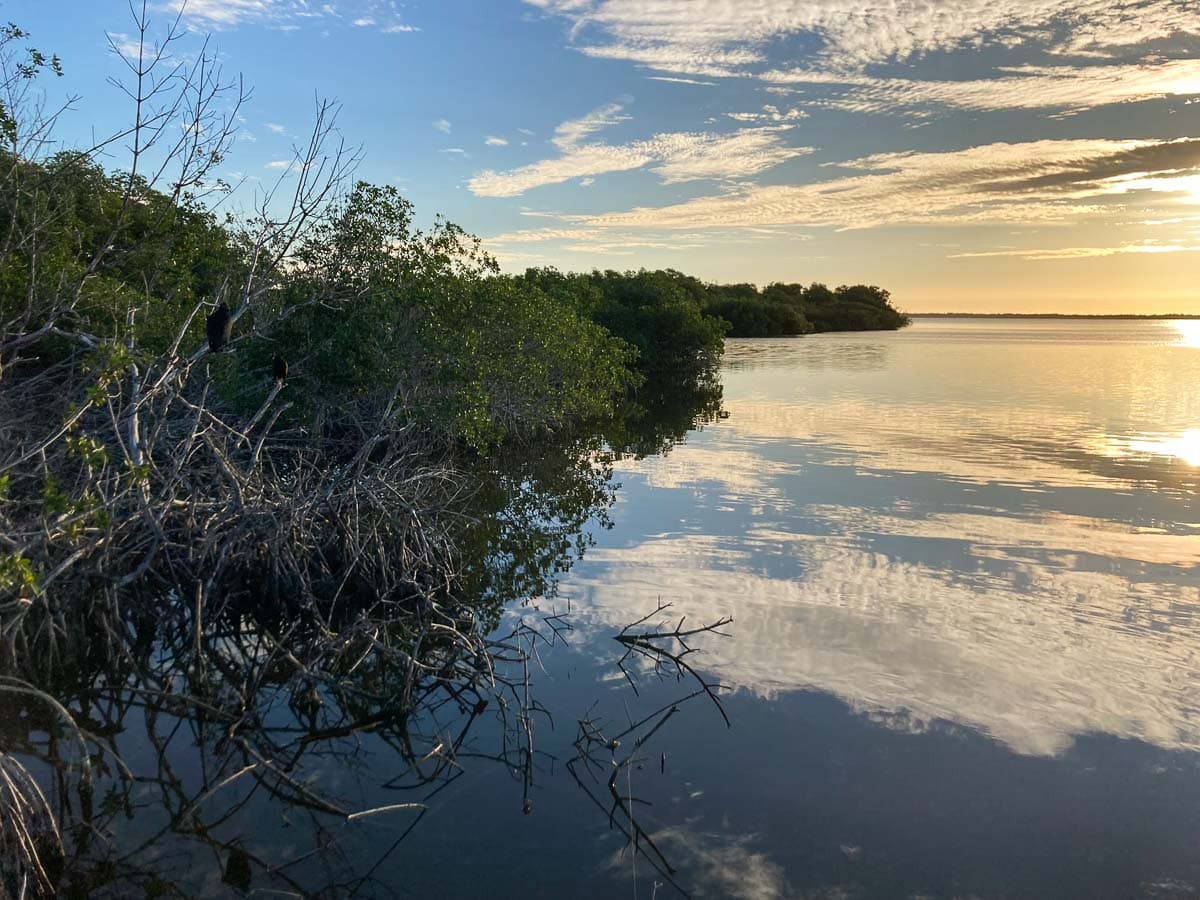
One of my personal favorite places on the Main Park Road in the Everglades is the West Lake boardwalk. I recommend walking this short boardwalk through the mangroves, a 0.5-mile loop, at first light.
The scenery is spectacular at dawn, the lake’s water perfectly reflective and still, the air thick with the songs and calls of birds. You’ll most likely also be all by yourself here early in the morning.
Along this short boardwalk, you can learn about the three different types of mangroves—white, black, and red—while listening to the wildlife that inhabits these aquatic forests.
I saw a variety of birds here, including woodpeckers, a few species of songbirds, vultures, egrets, and herons.
The West Lake boardwalk is beautiful any time of the day, though, but it does get busier as the day progresses. For peace, quiet, and solitude, and the best bird watching opportunities, go as early in the morning as you can.
Snake Bight Trail
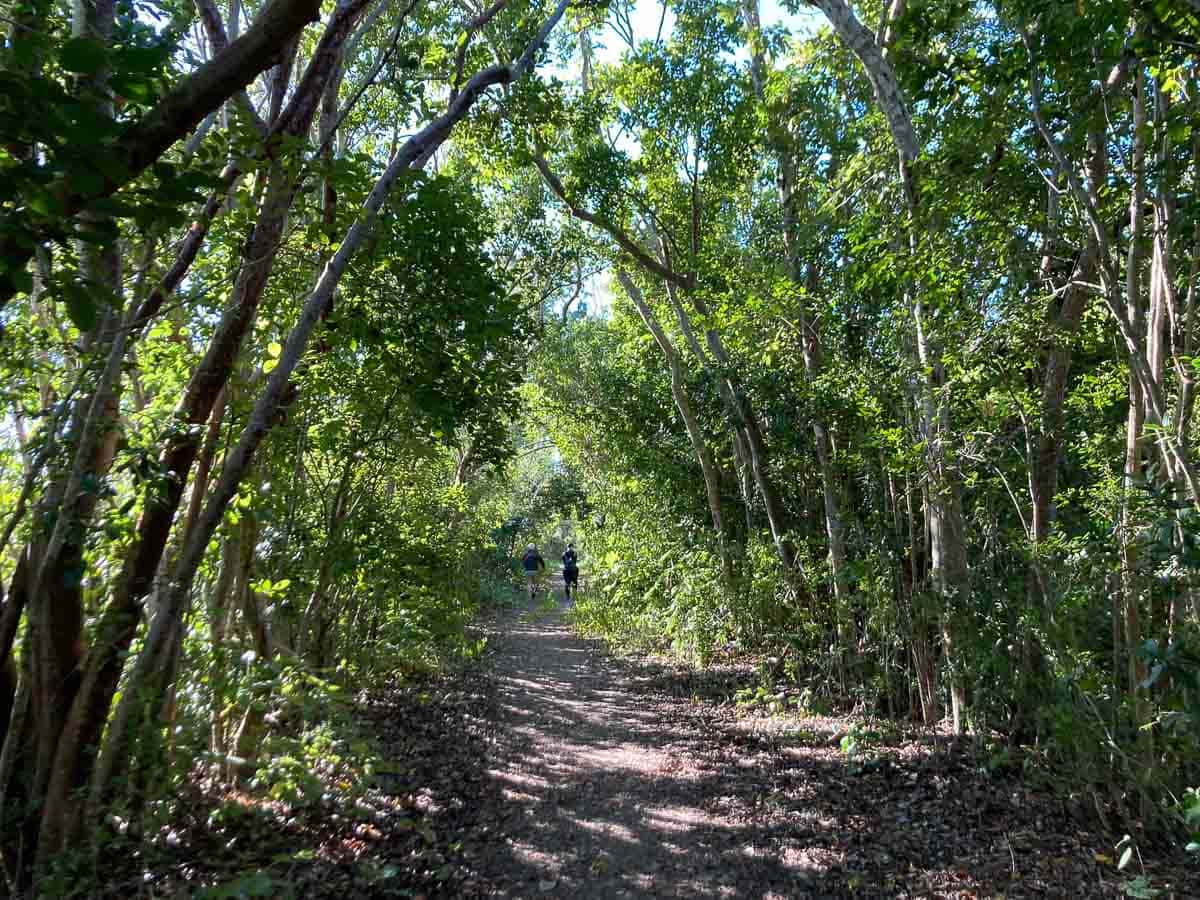
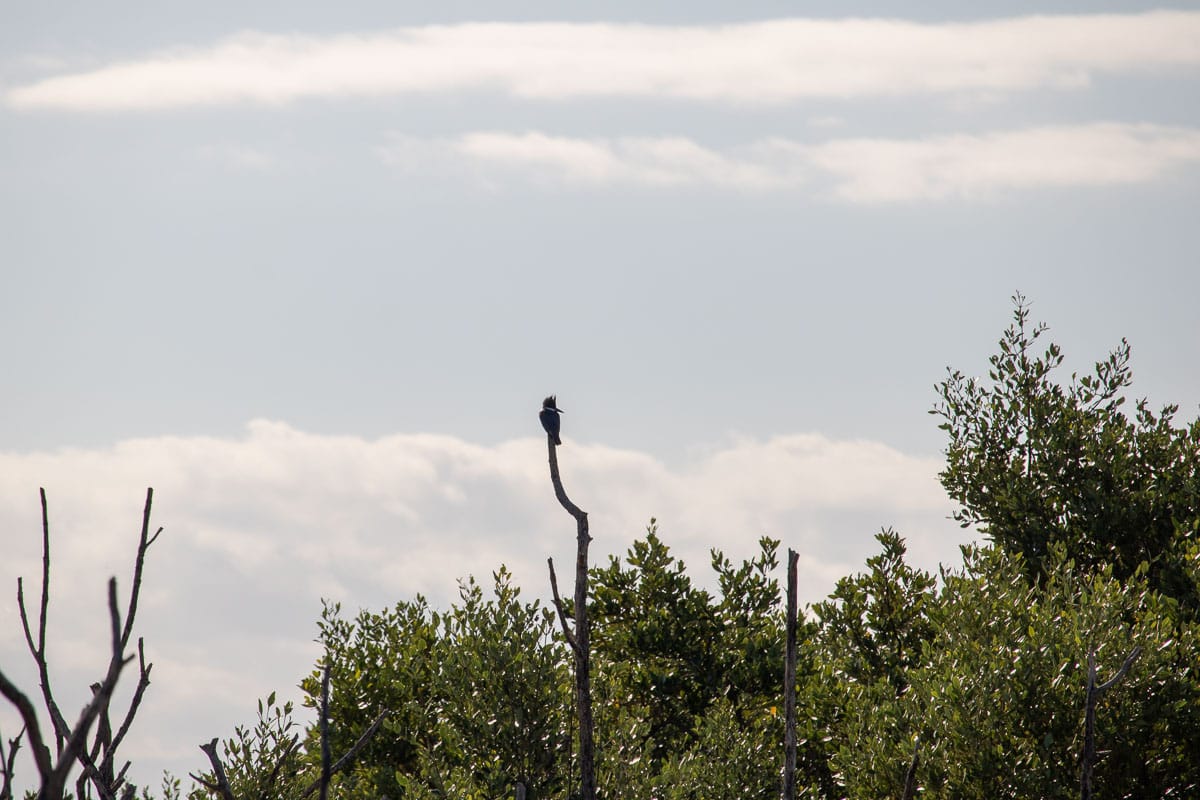
One of the longer trails in Everglades National Park, the Snake Bight Trail is great for a wildlife-centric hike or bike ride.
Located about four miles north of the Flamingo Visitor Center, the trail parallels the Snake Bight Canal. Flanked by the dense vegetation of a tropical hardwood hammock, it offers great opportunities to see woodland birds like warblers and mangrove cuckoos.
The Snake Bight Trail ends on a boardwalk on the shore of Snake Bight, which is a phenomenal spot to see wading birds, shore birds, and occasionally even flamingos.
Snake Bight itself—a bight is a small bay within a larger bay, in this case Florida Bay—is home to numerous marine animals, including manatees, dolphins, crocodiles, and countless fish. Those animals are, however, rarely seen from the boardwalk.
By itself, the Snake Bight Trail is 3.2 miles roundtrip. You can either hike or bike it.
If you are planning on biking in the Everglades, though, I recommend combining the Snake Bight Trail with the Rowdy Bend Trail. Starting at the Flamingo Marina, which has bicycle rentals, this roundtrip bike ride is 12.6 miles.
Eco Pond
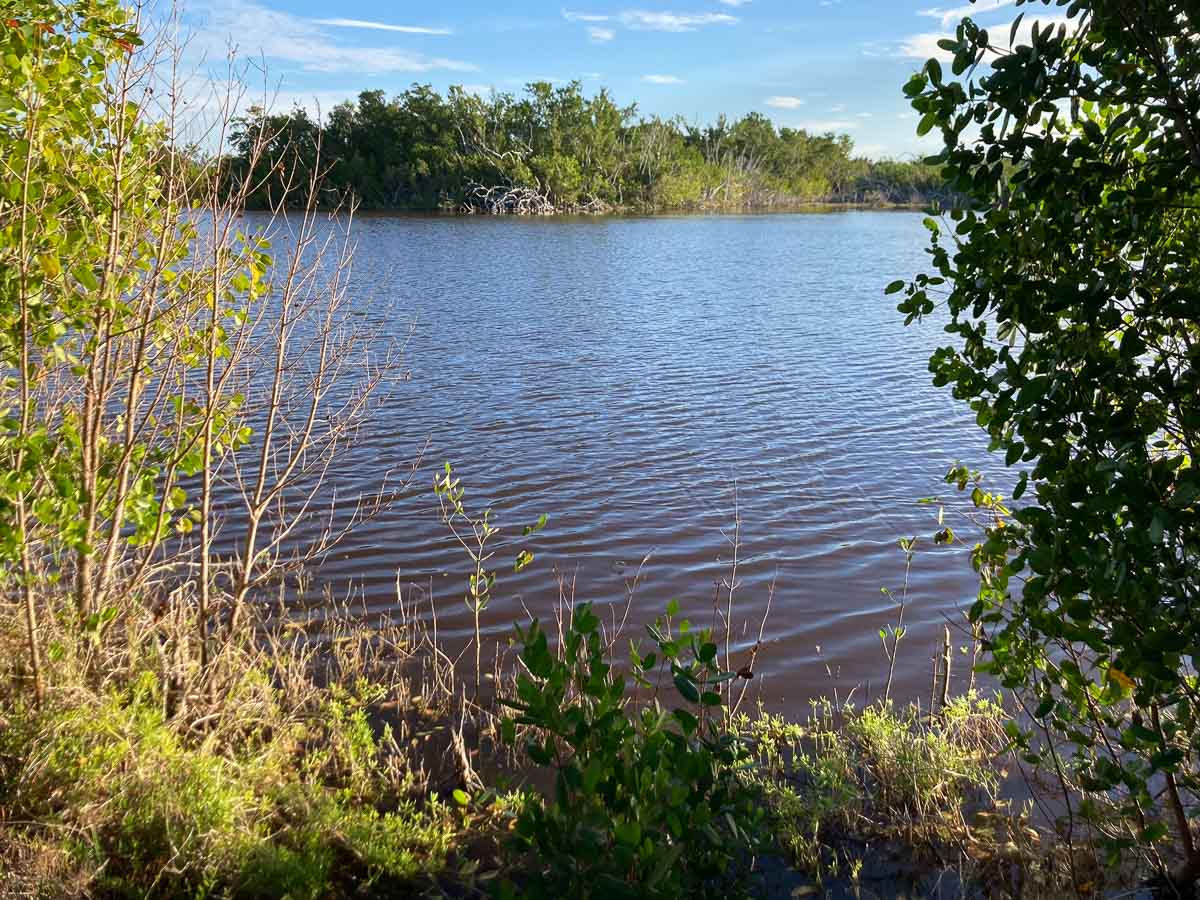
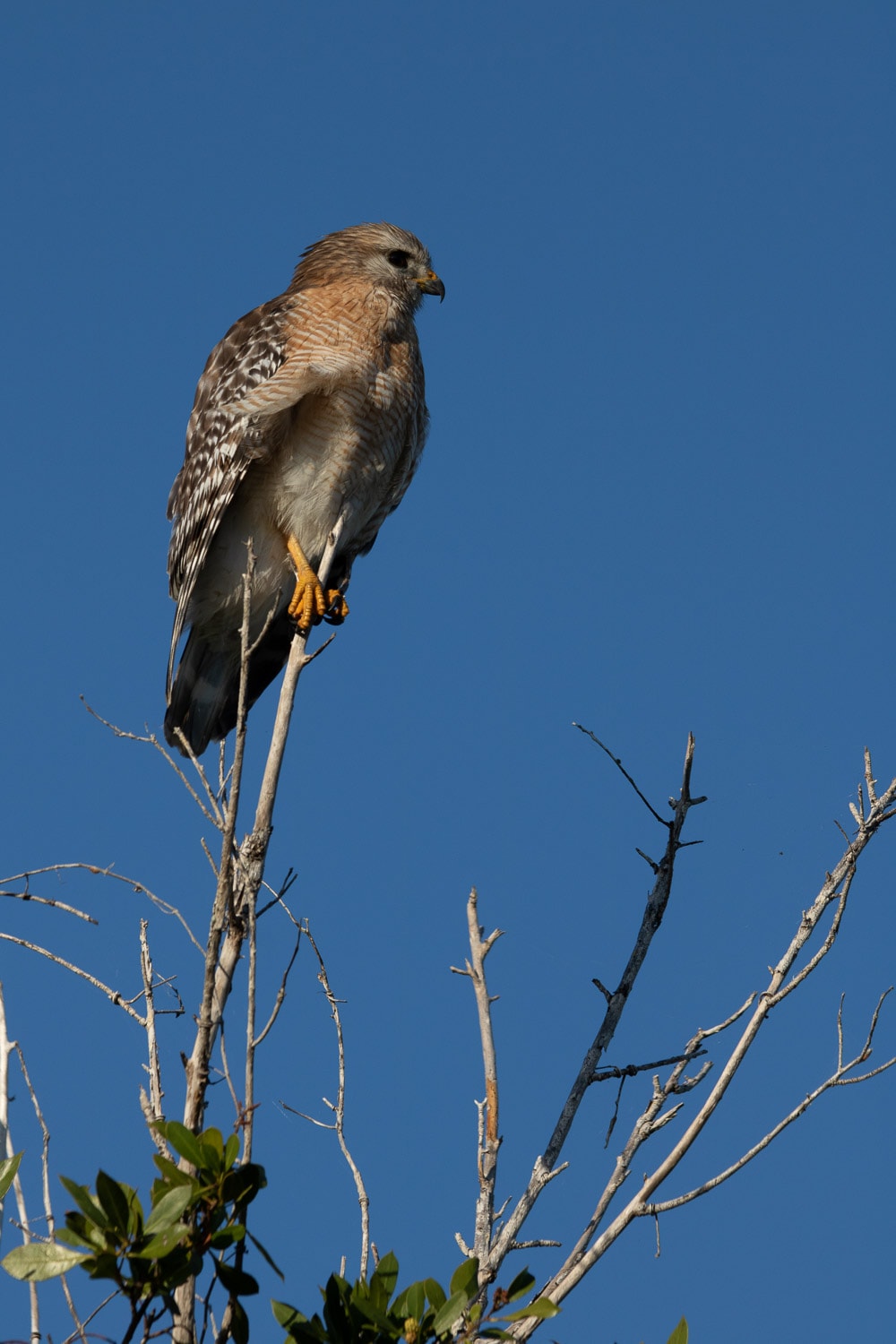
A small pond just past the Flamingo Visitor Center and Marina, Eco Pond can be a good place to see Everglades wildlife on the Main Park Road.
Visitors often see alligators here, while turtles often swim around the pond, too. And of course, there are lots of birds to observe.
Look for ducks, anhingas, American coots, and painted buntings, as well as a variety of songbirds and wading birds. Even birds of prey can sometimes be seen here, including red-shouldered hawks and osprey, both of which are common in the general Flamingo area.
You can walk around Eco Pond on a grassy 0.5-mile loop trail, which has a small viewing platform.
Flamingo Marina
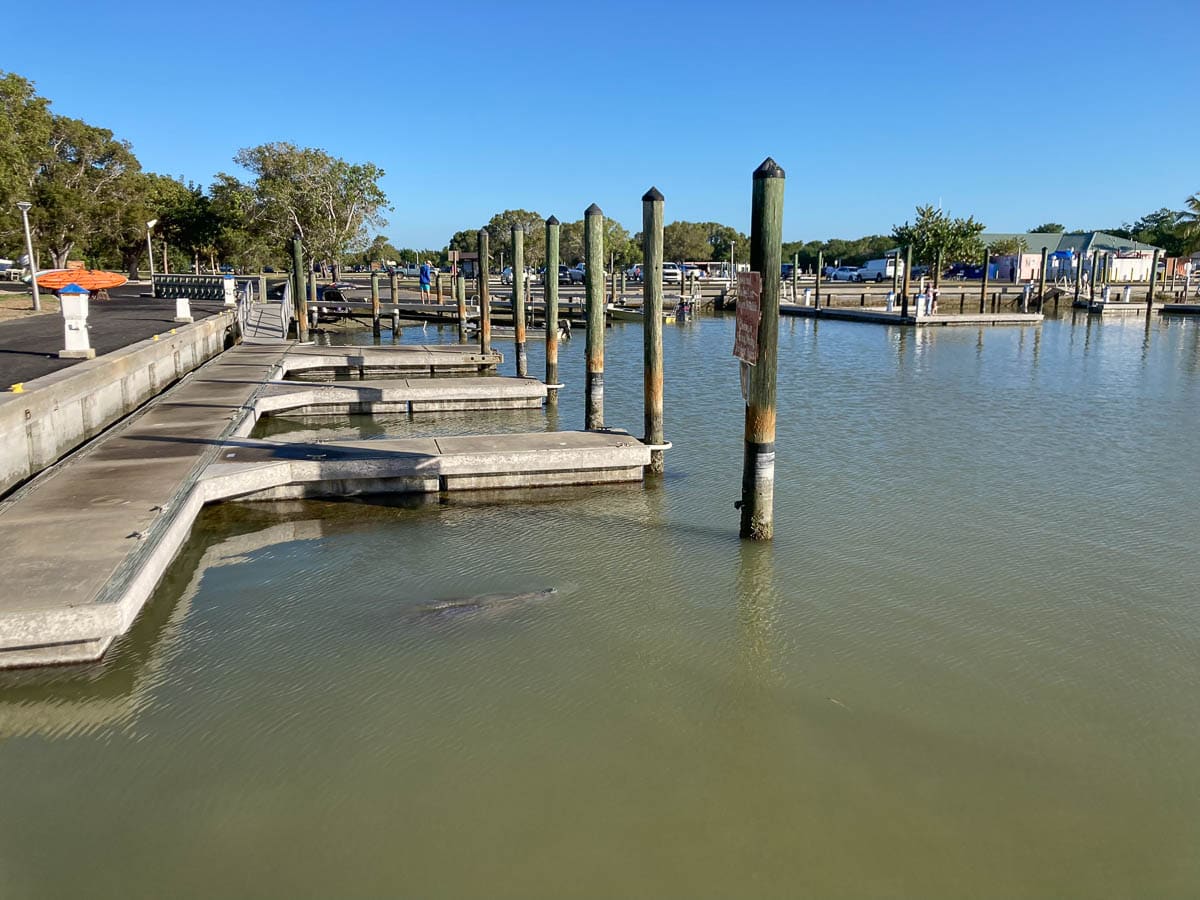
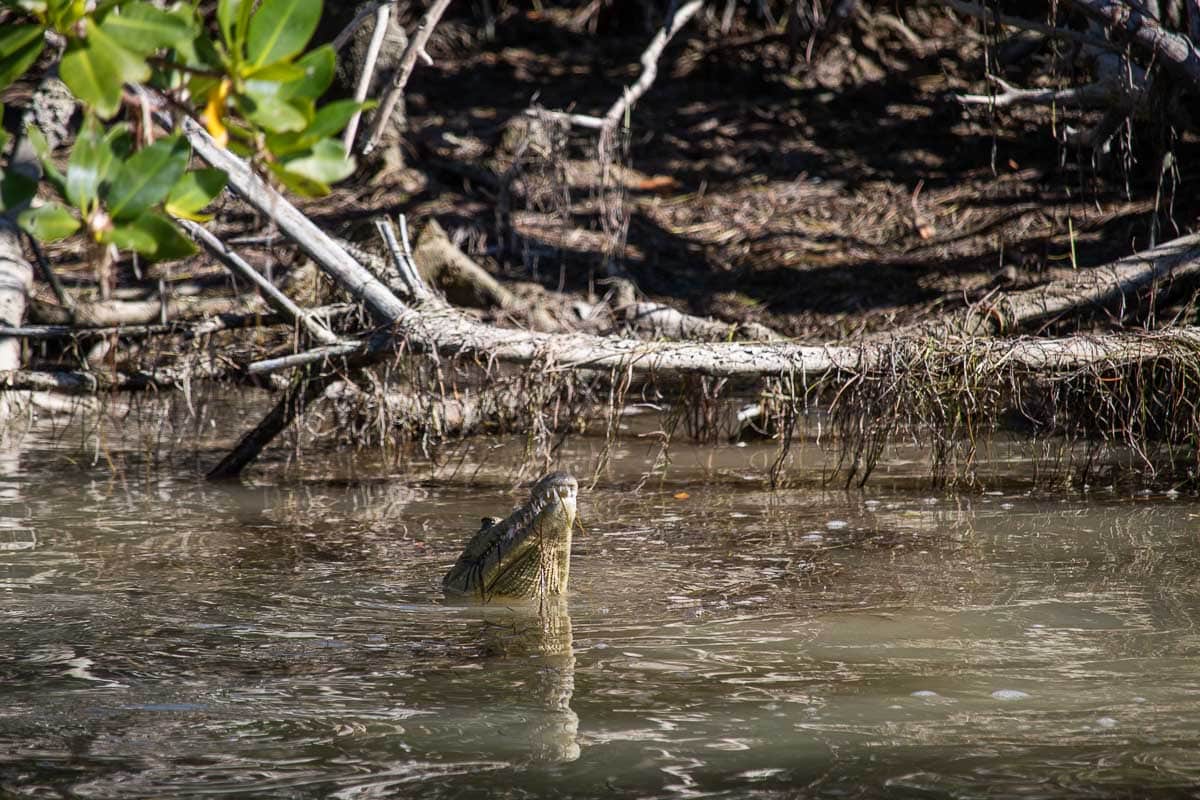
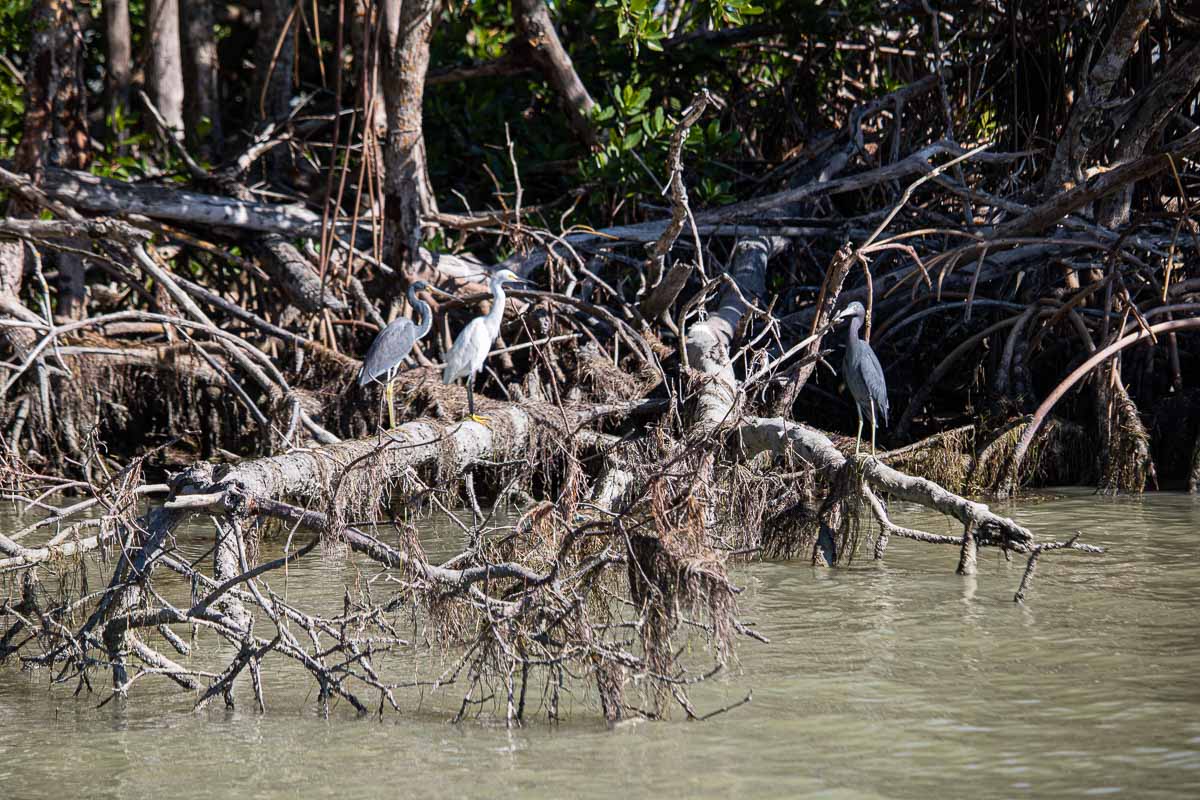
Open throughout the year—except for occasional closures during hurricane season—the Flamingo Marina is the tourist hub of the southern Everglades.
It is situated on the shimmering shores of Florida Bay, offering access to both the shallow waters of the bay and the park’s inland ponds and waterways.
As the ultimate destination on your Everglades Main Park Road adventure, this is where you’ll find the most amenities and services anywhere in Everglades National Park.
Flamingo is home to a visitor center, huge parking area, several boat ramps, fuel station, restrooms, picnic areas, a walking trail, marina store, and food truck. The activities booth offers bike, kayak, and canoe rentals, as well as guided boat tours.
I recommend basing yourself in the Flamingo area for a couple of days—there are campsites, eco-tents, and other accommodation options.
Join a boat tour in Florida Bay, rent a kayak or canoe, explore the area on foot, enjoy a picnic,… there’s lots to see and do here.
In terms of wildlife viewing, the Flamingo Marina is remarkable, even by the high standards of Everglades National Park. You can almost always see West Indian manatees in the marina’s water, while American crocodiles hang out in the nearby mangroves.
Birds are present in plethoric numbers here, too, ranging from terns, herons, and pelicans to osprey and red-shouldered hawks.
For more information about all facilities and services at Flamingo, as well as opening times and prices, please visit the Flamingo Adventures website.
Flamingo Eco-Tents and Campground
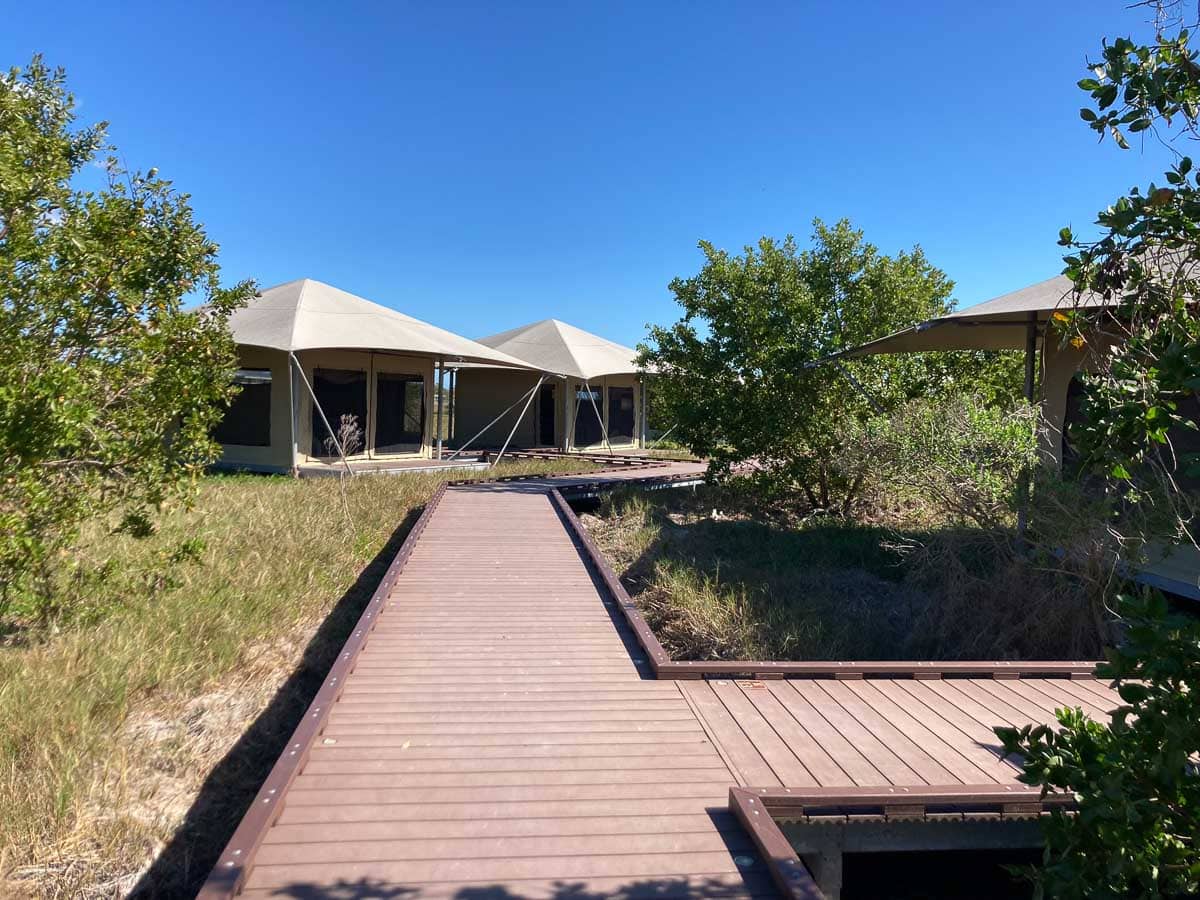
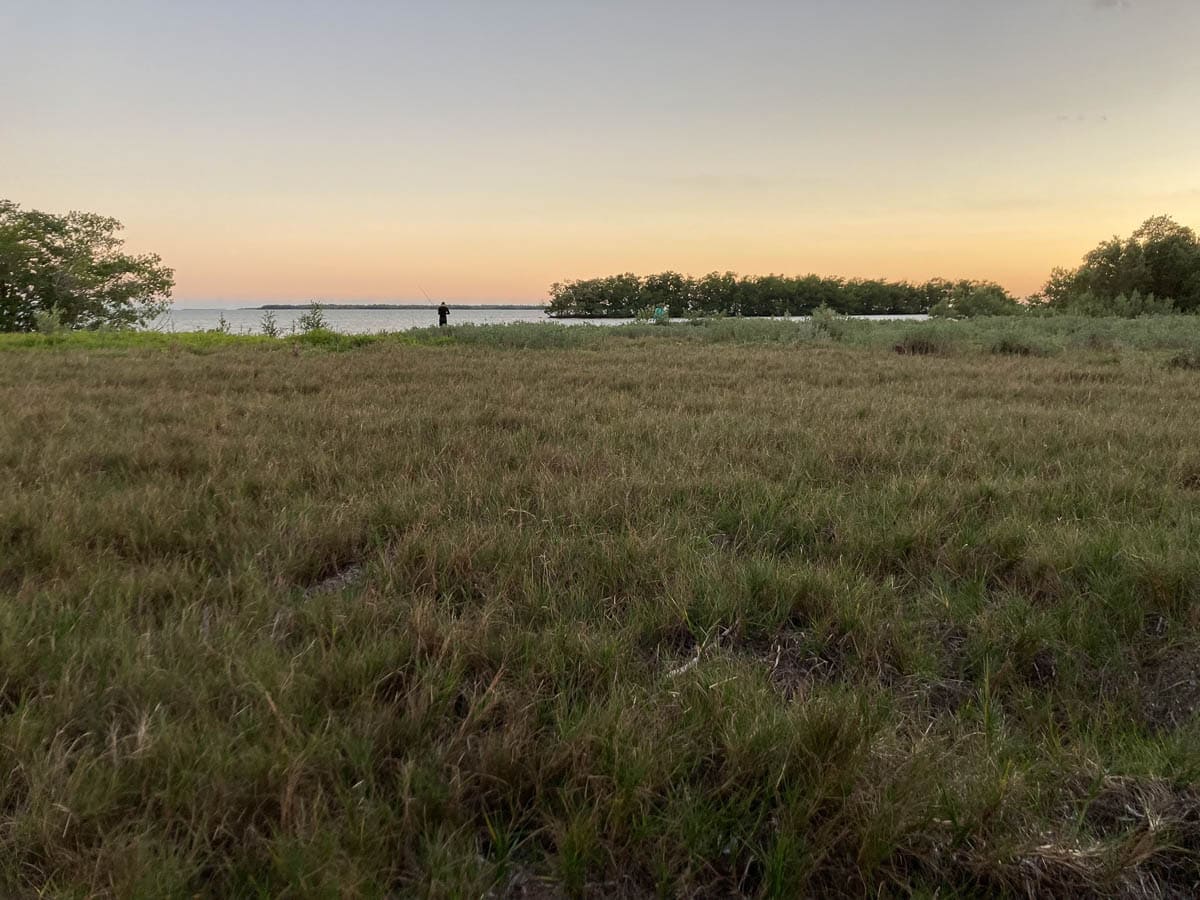
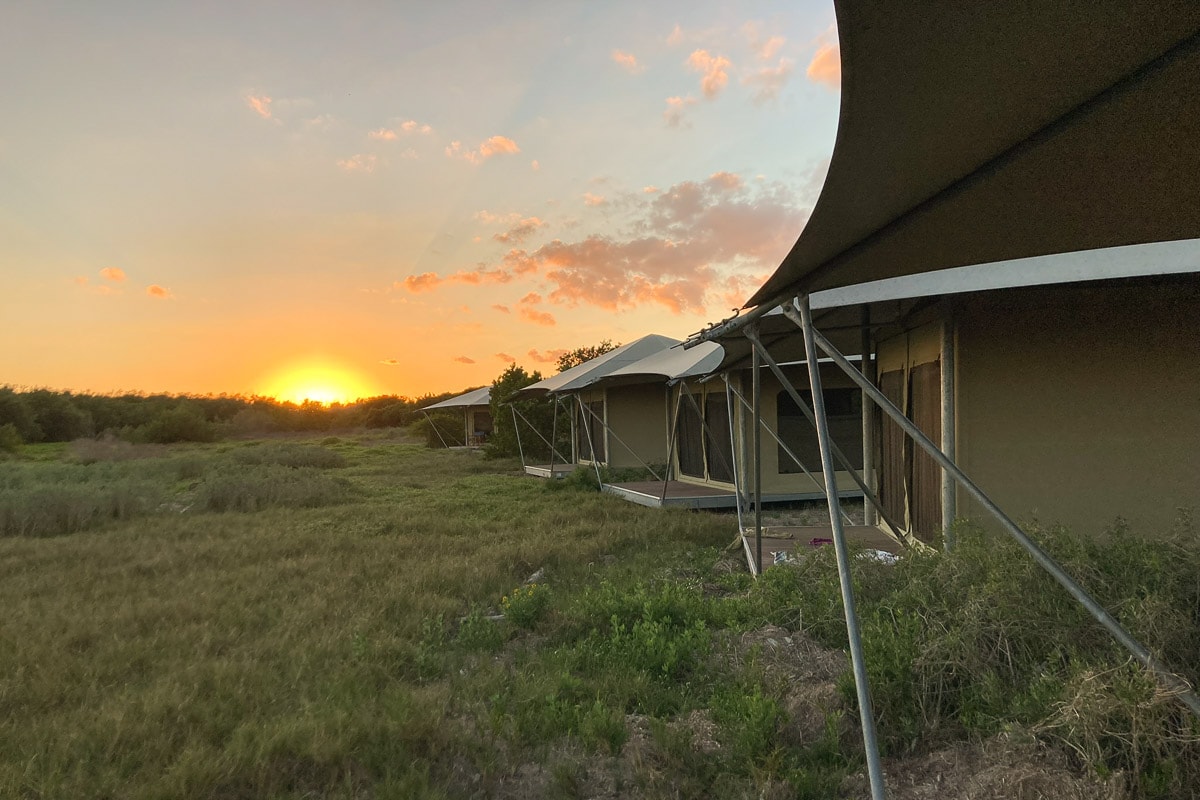
At the very end of the Everglades Main Park Road, you’ll find the Flamingo Campground and Flamingo Eco-Tents.
This sprawling campground offers wonderful views of Florida Bay—it’s especially amazing at sunset—and access to the Coastal Prairie Trail, Bayshore Trail, and Guy Bradley Trail, the latter of which runs straight to the Flamingo Marina.
I spent a couple of nights glamping at the Flamingo Eco-Tents, which was an experience I’d recommend to everyone. Accessible via a boardwalk, those large canvas tents are the absolute perfect base to explore the greater Flamingo area.
Even if you’re not camping or glamping in Everglades National Park, the wide-open views of Florida Bay make this campground worth visiting.
